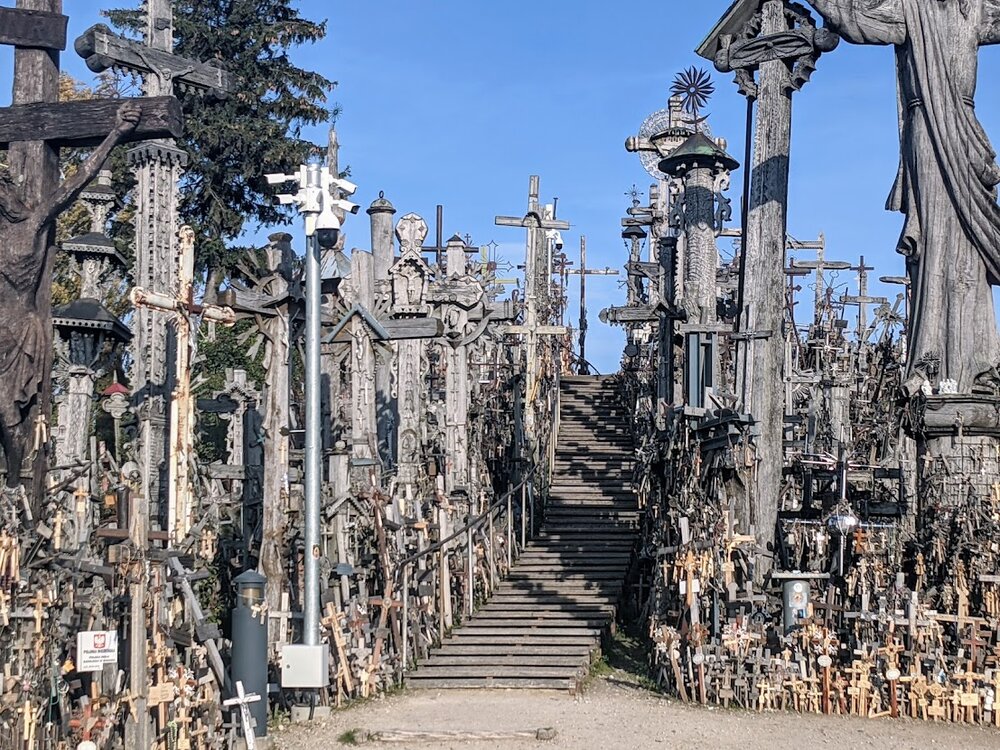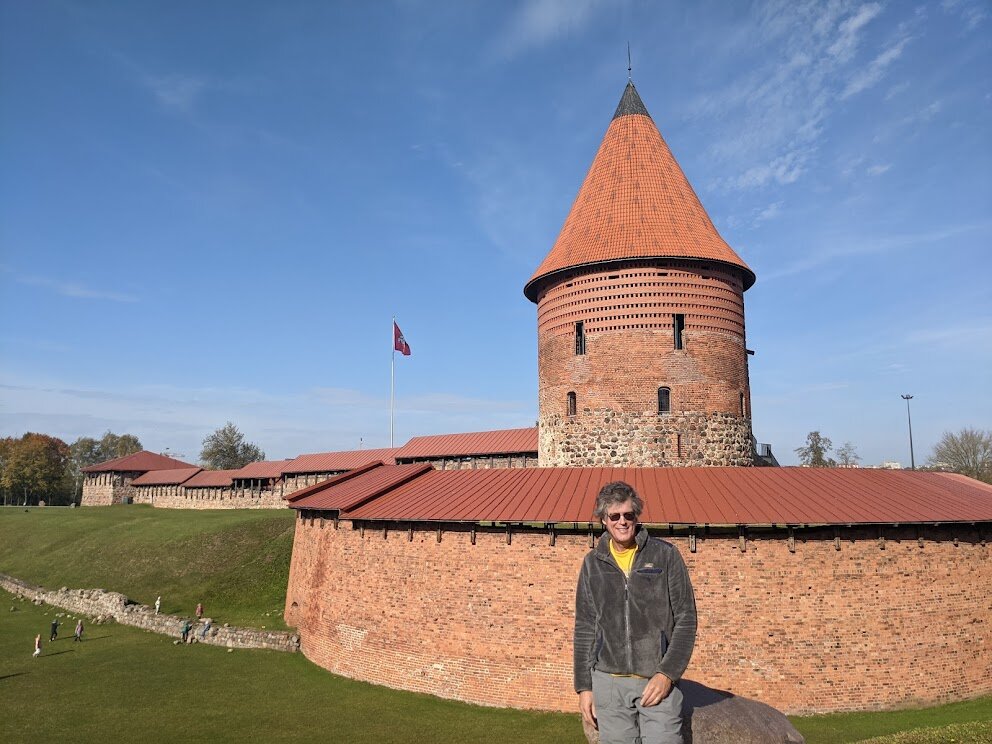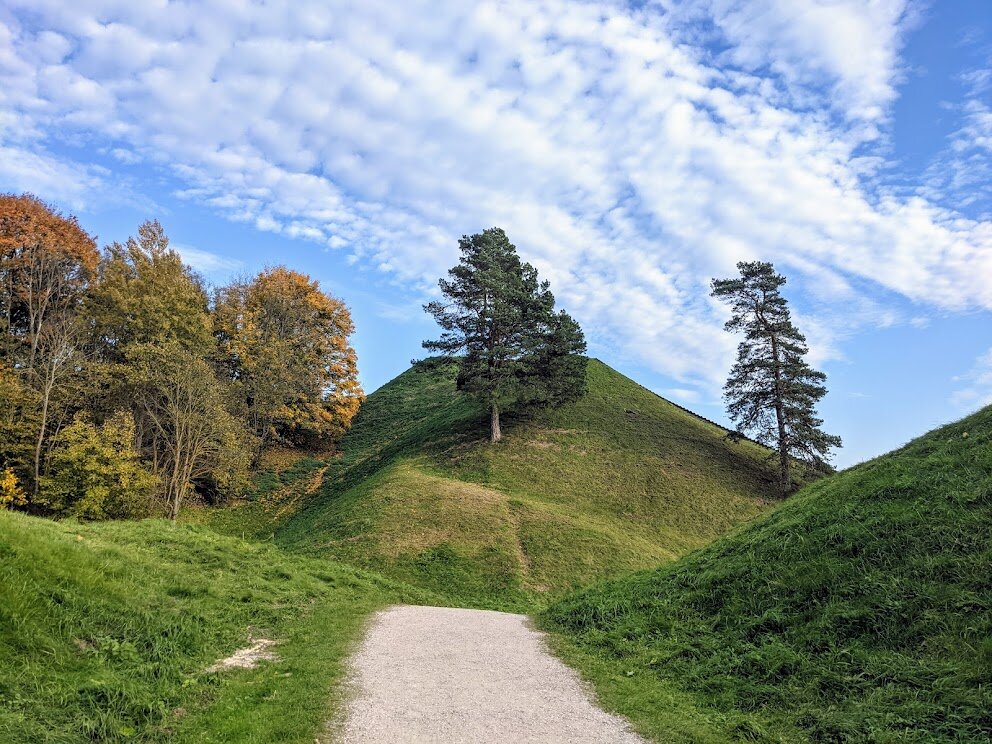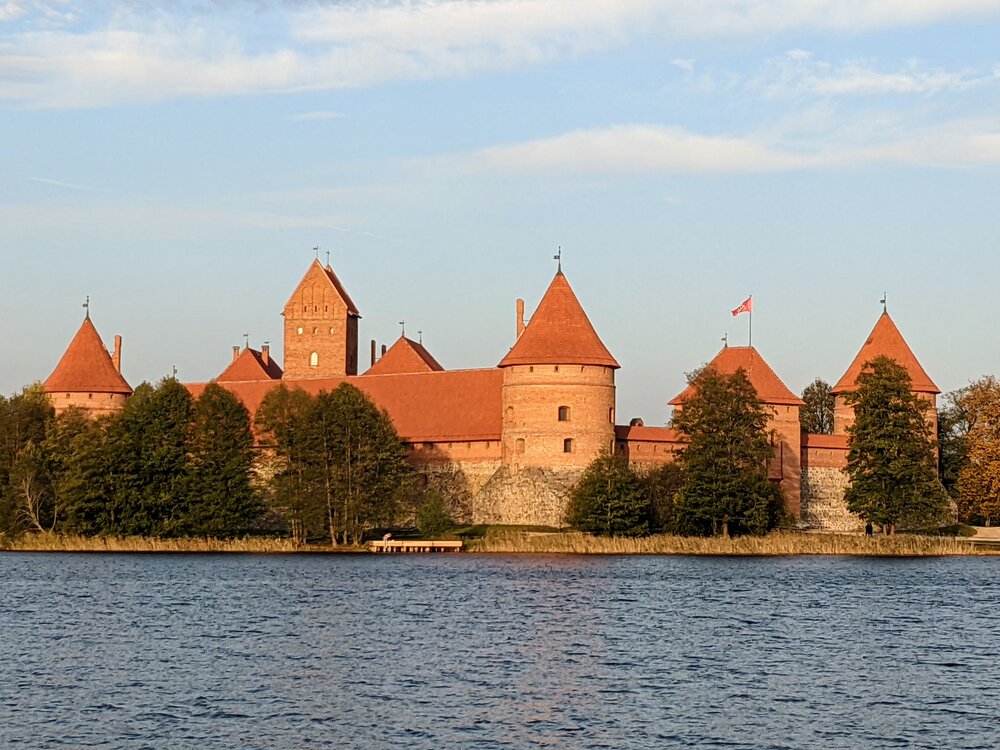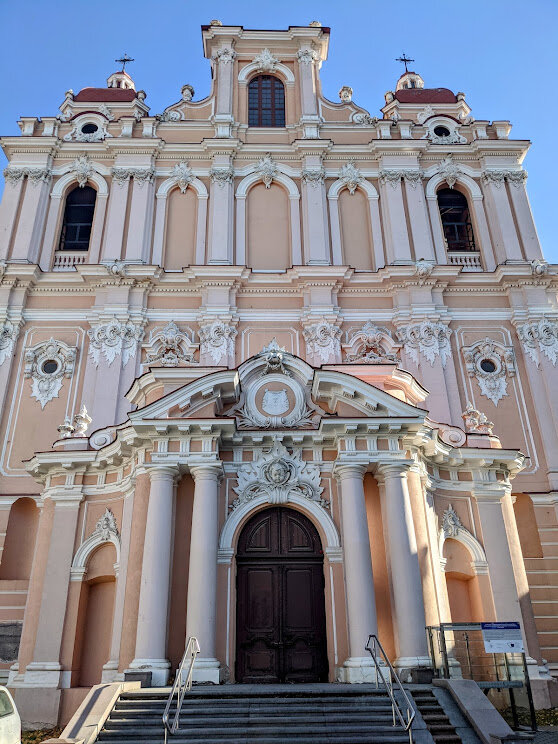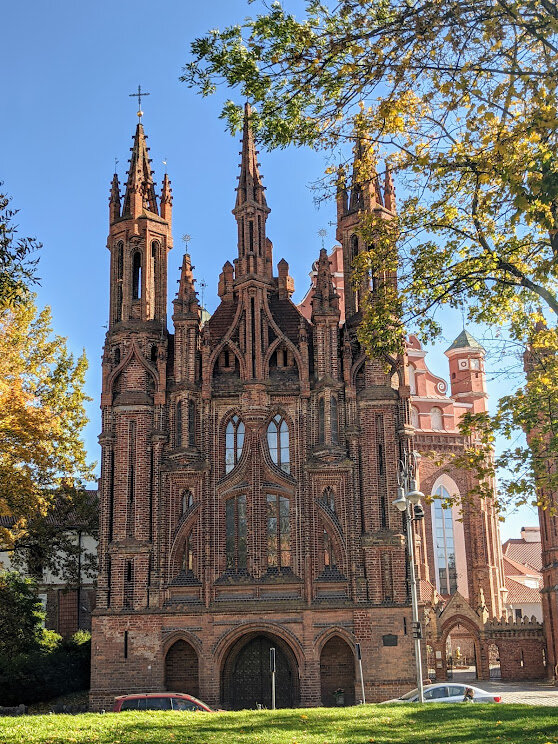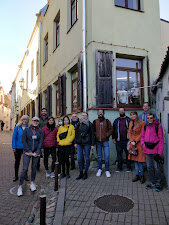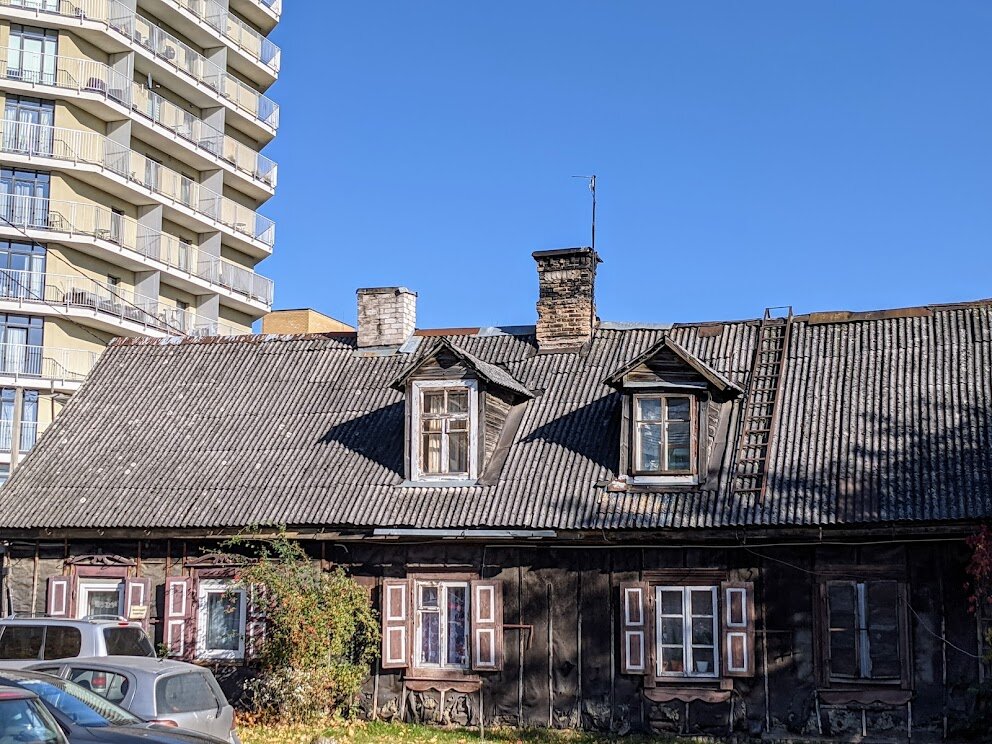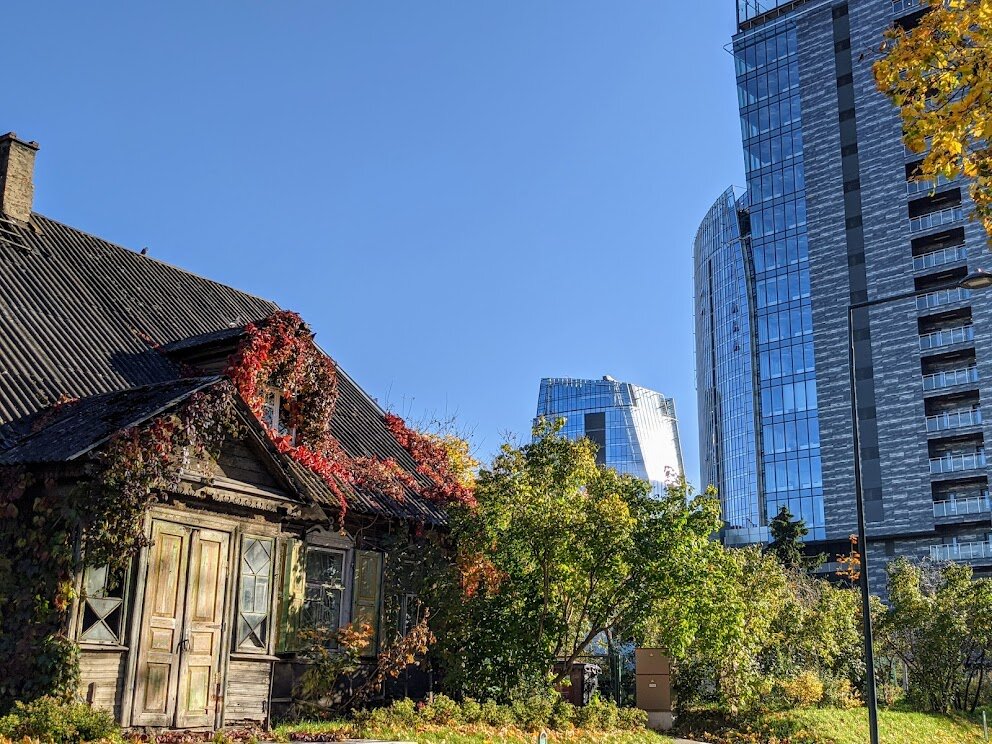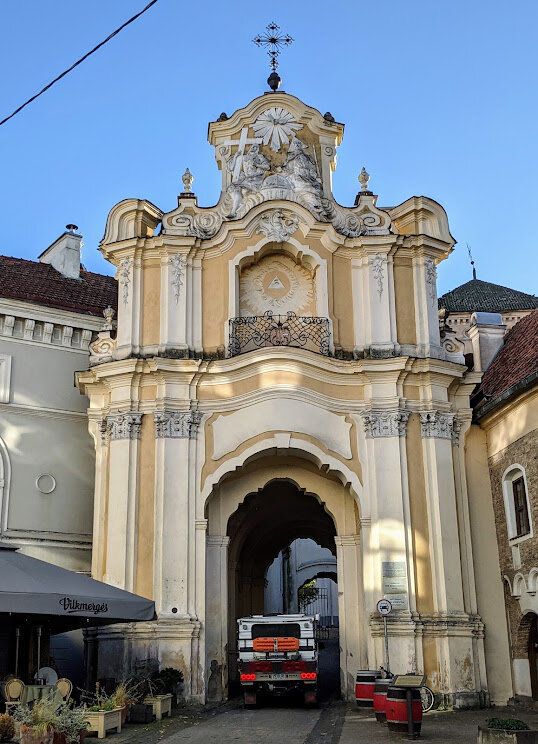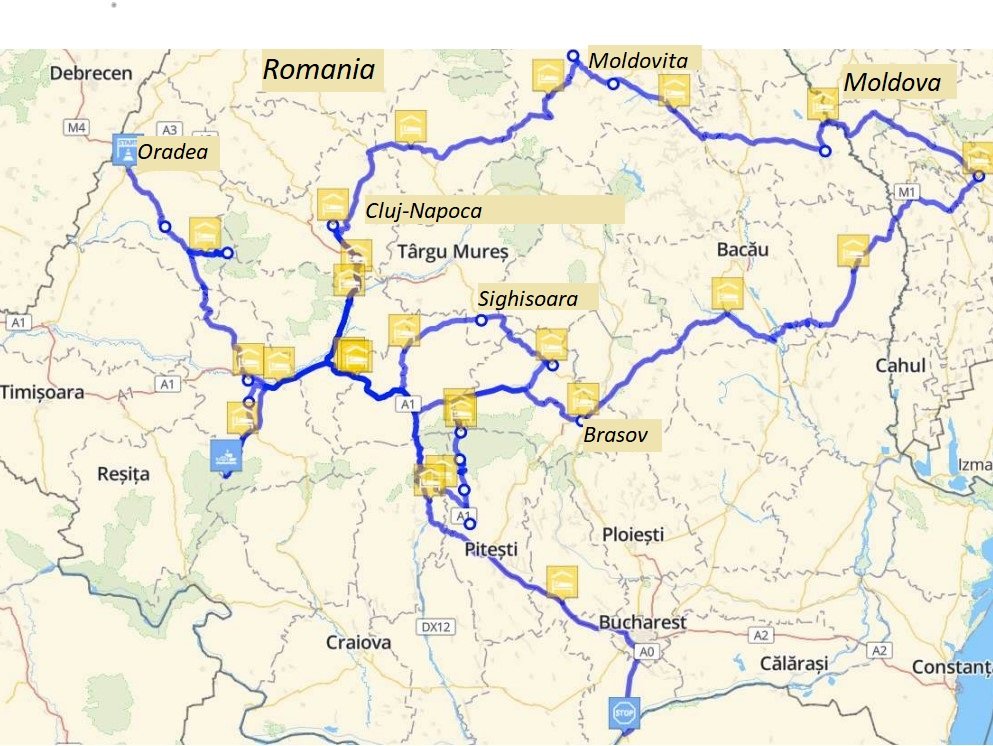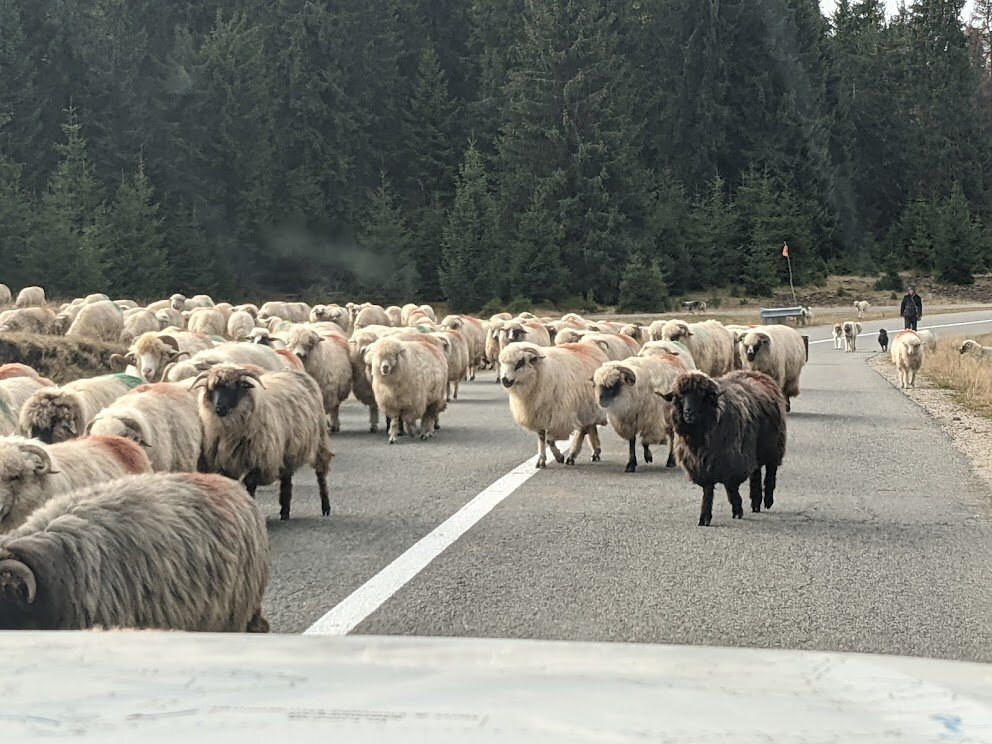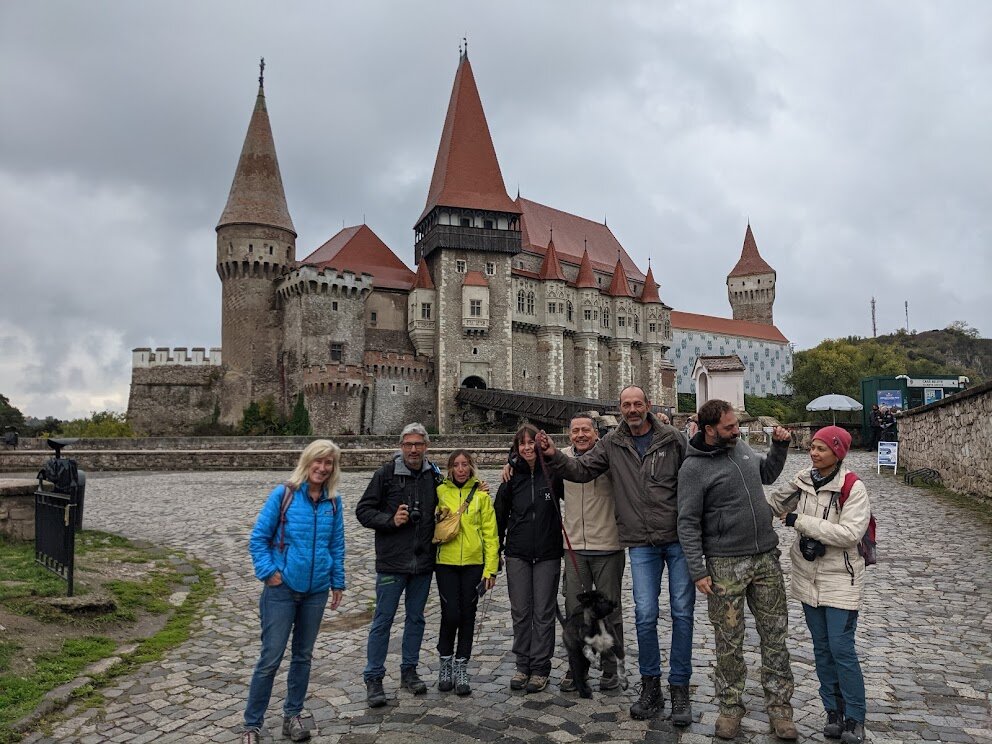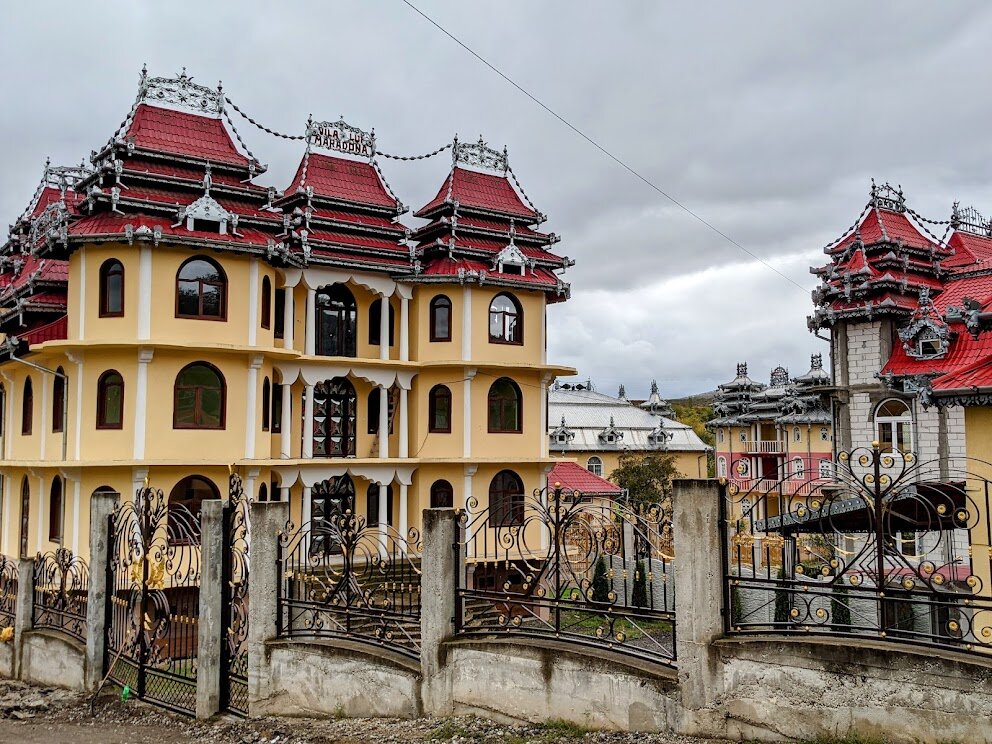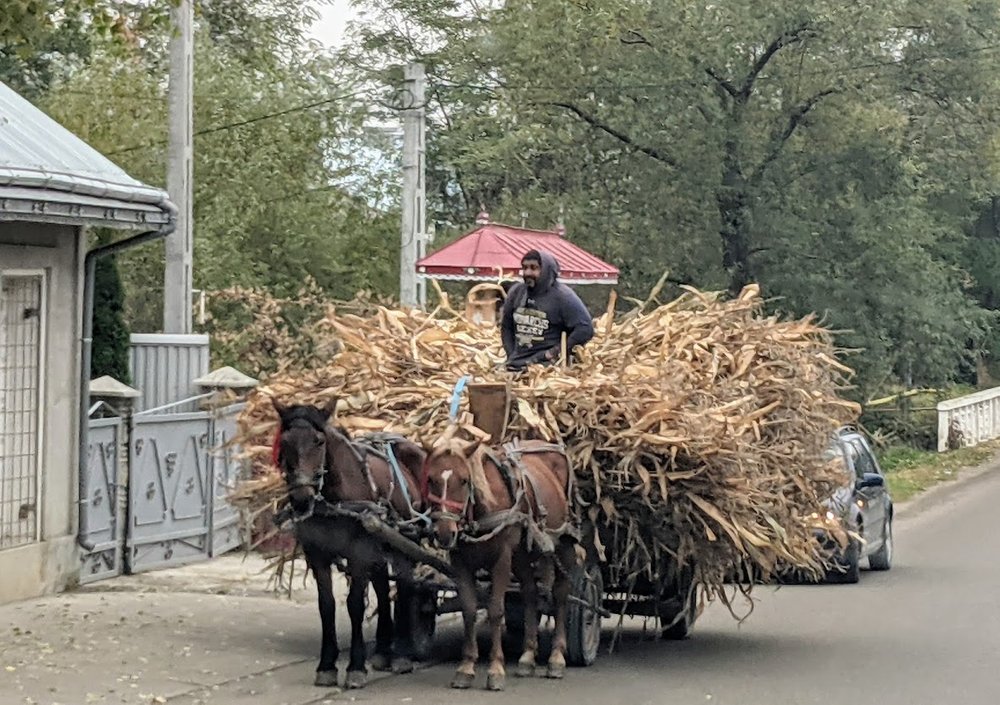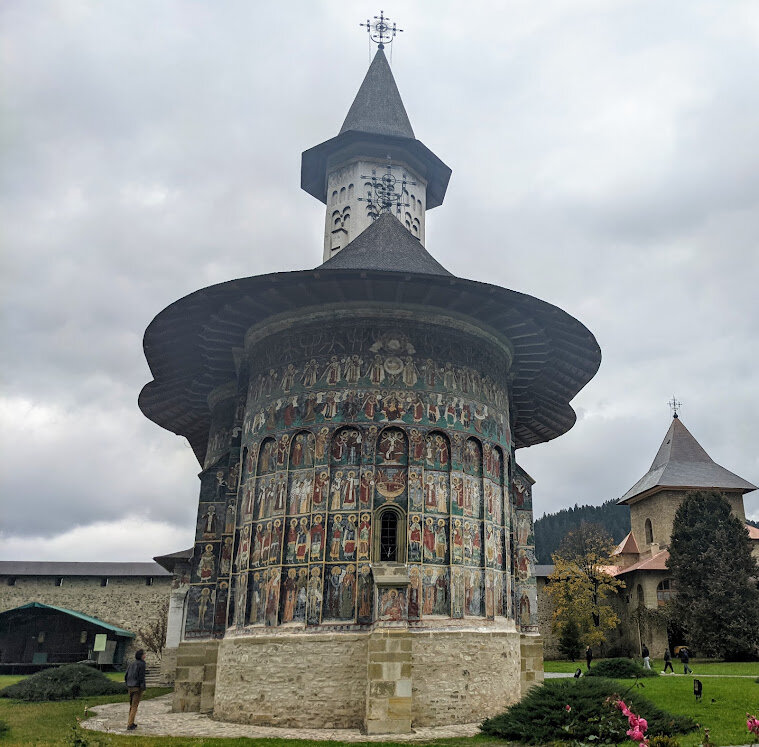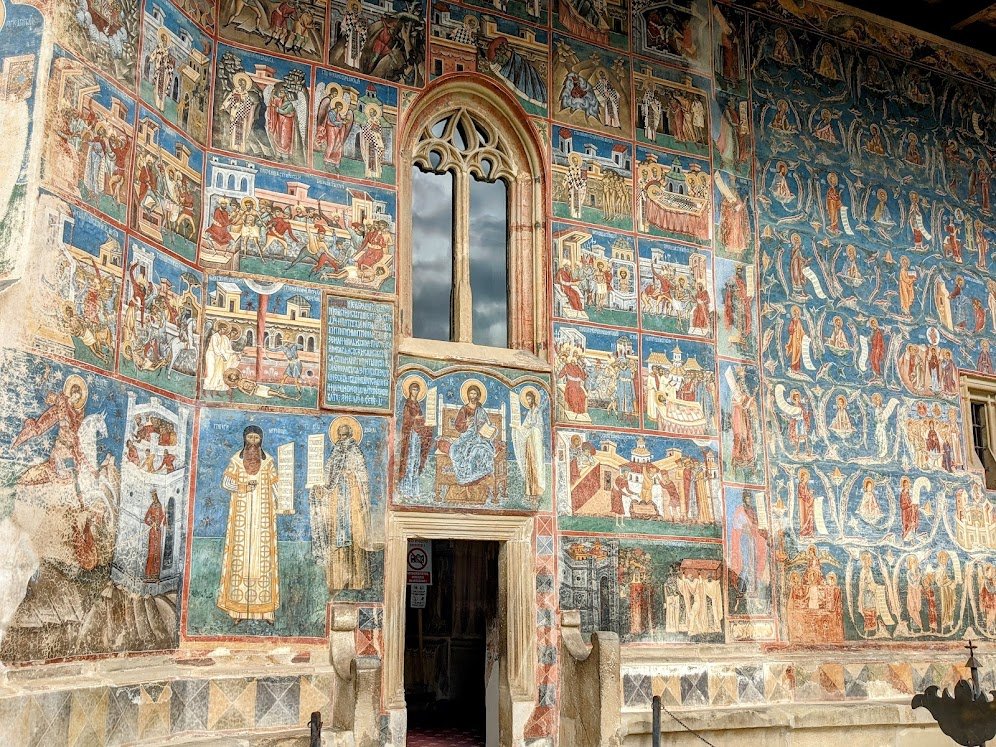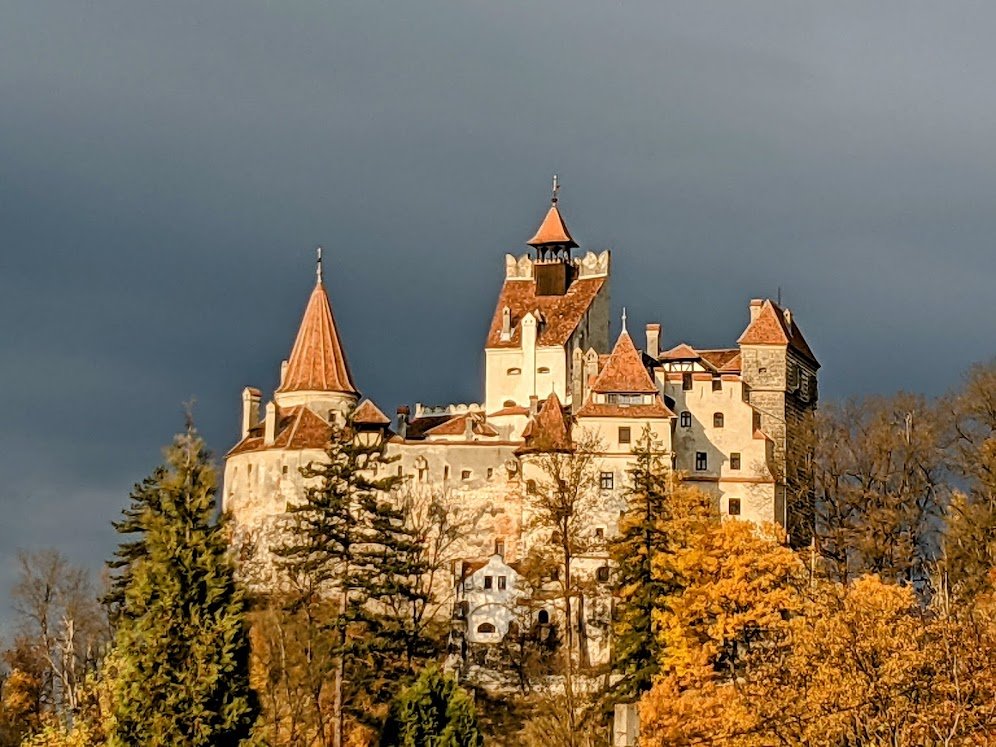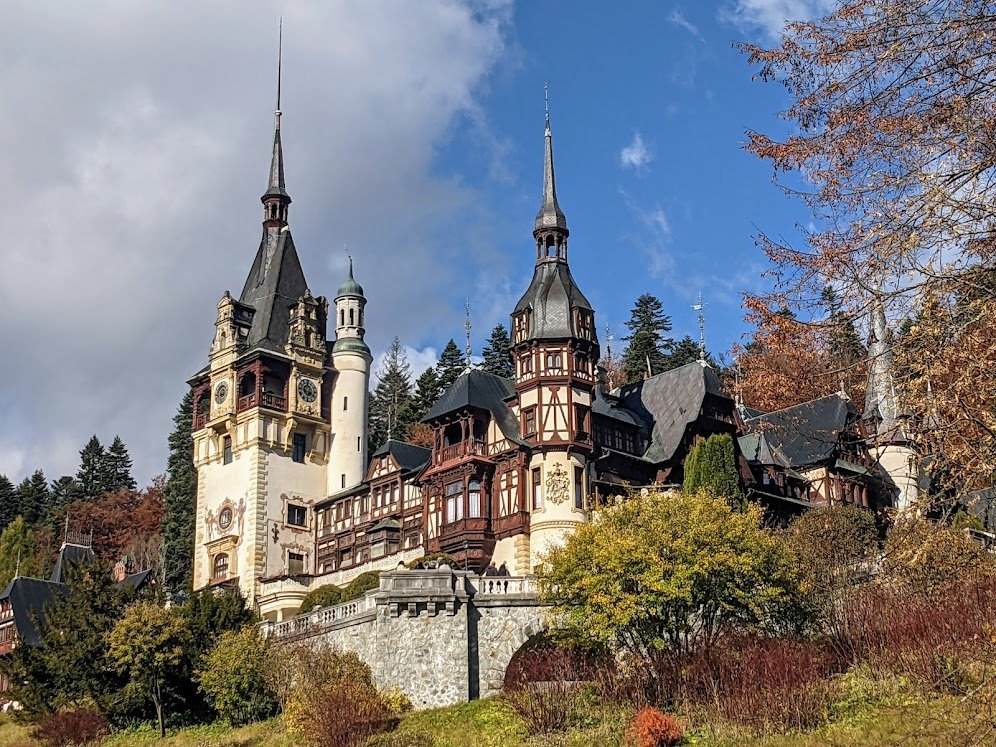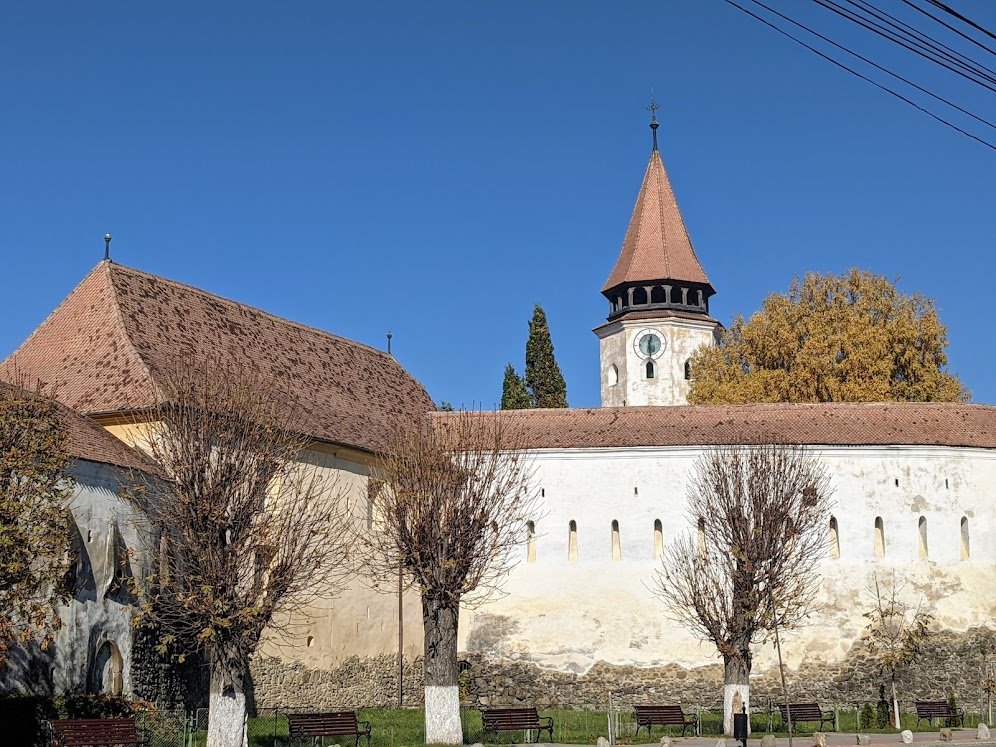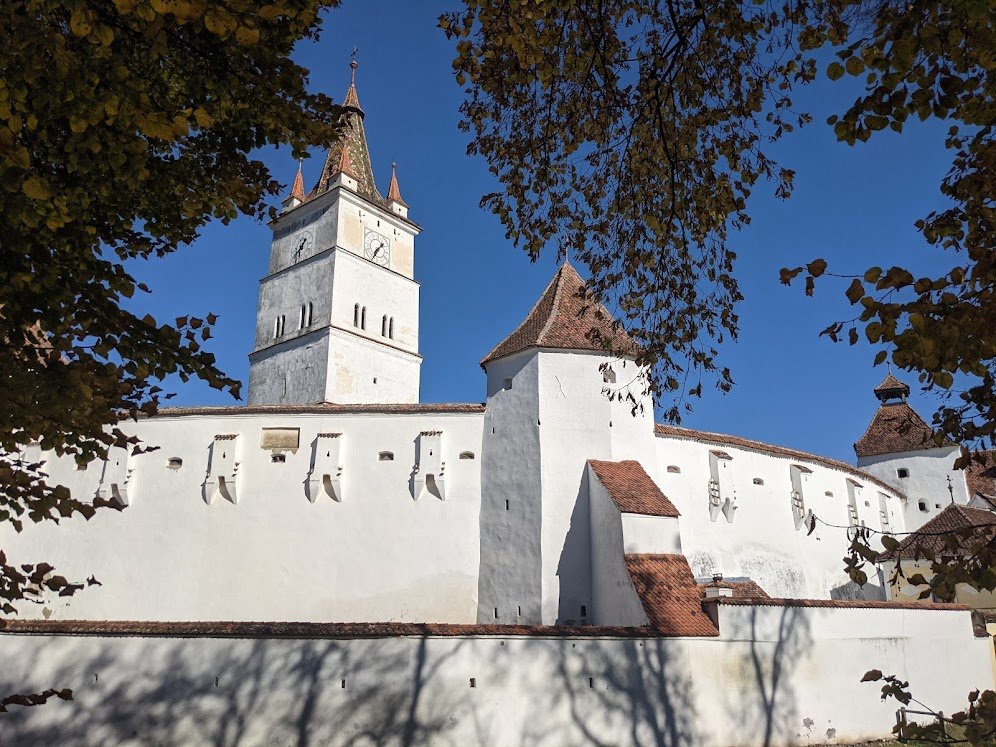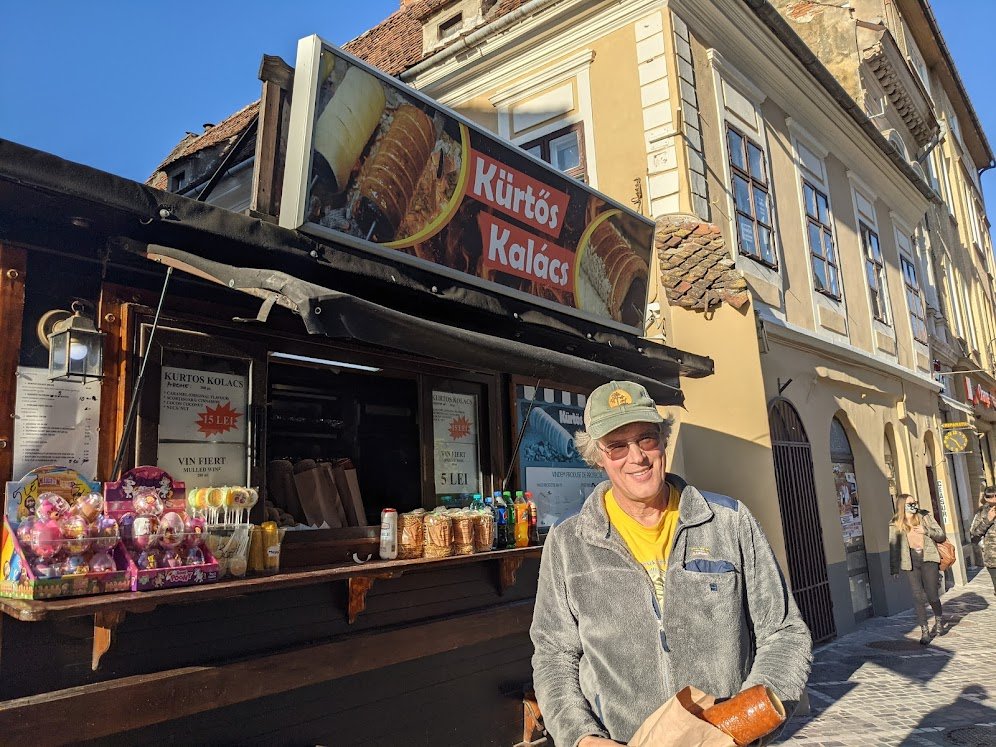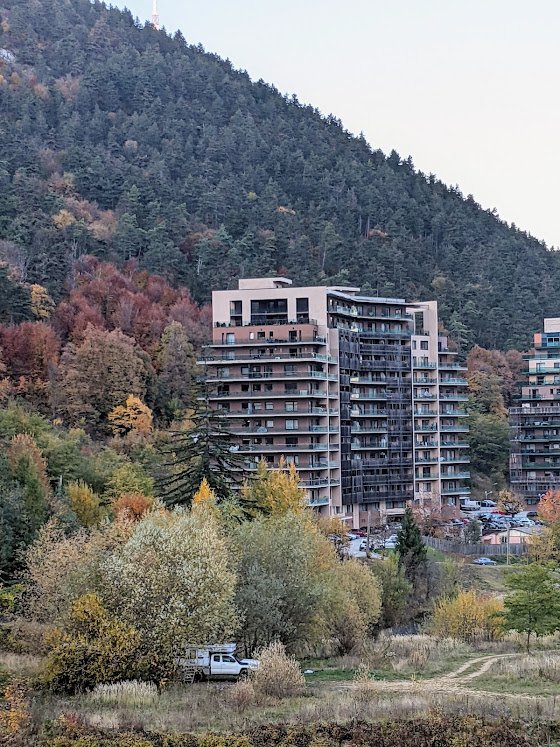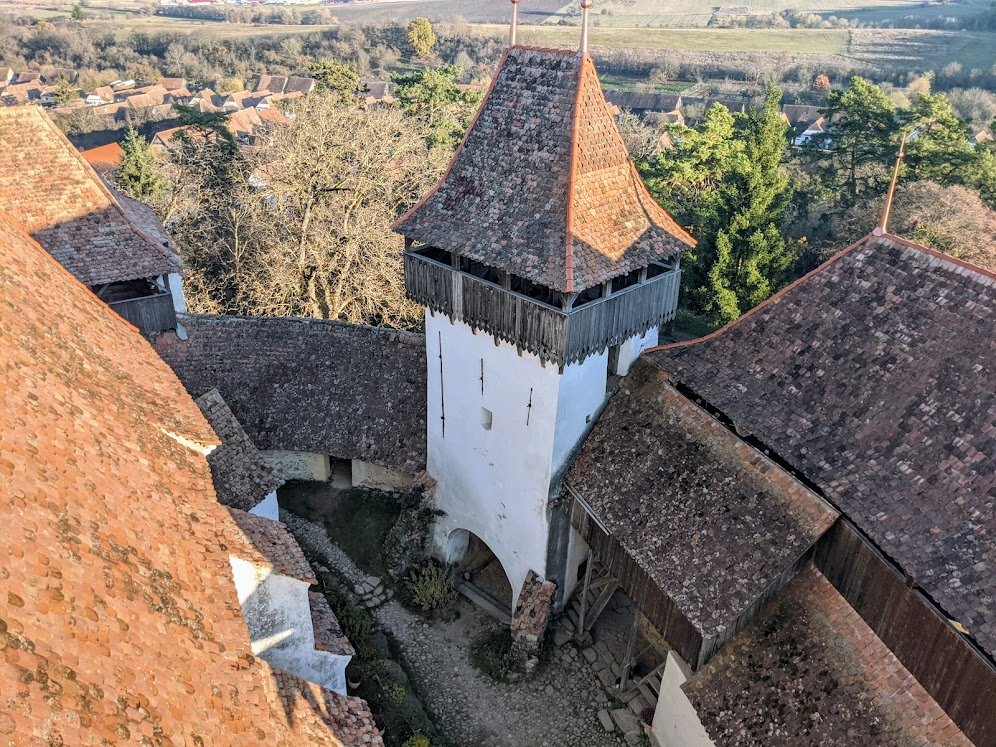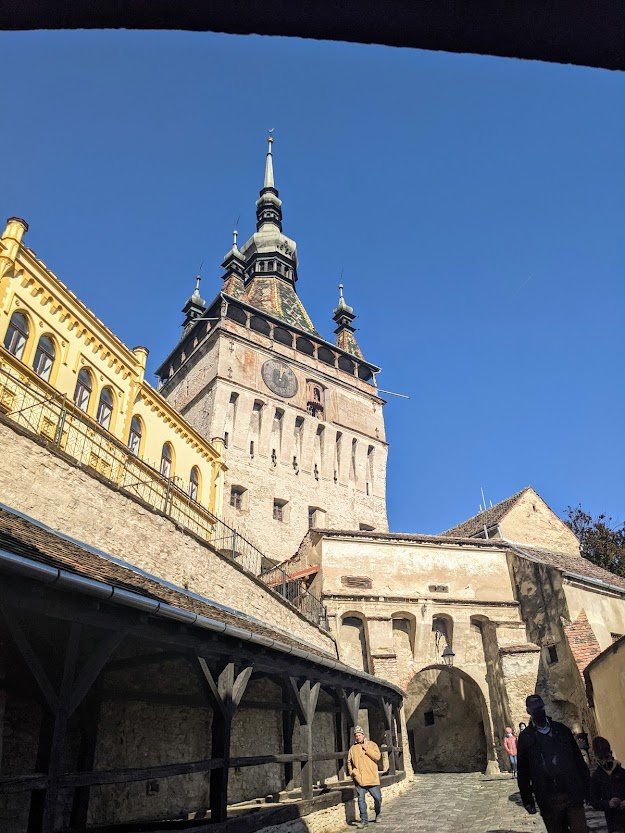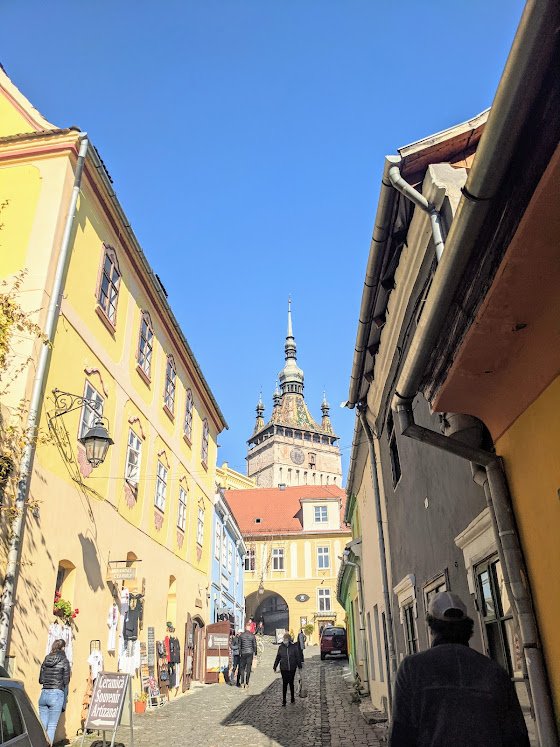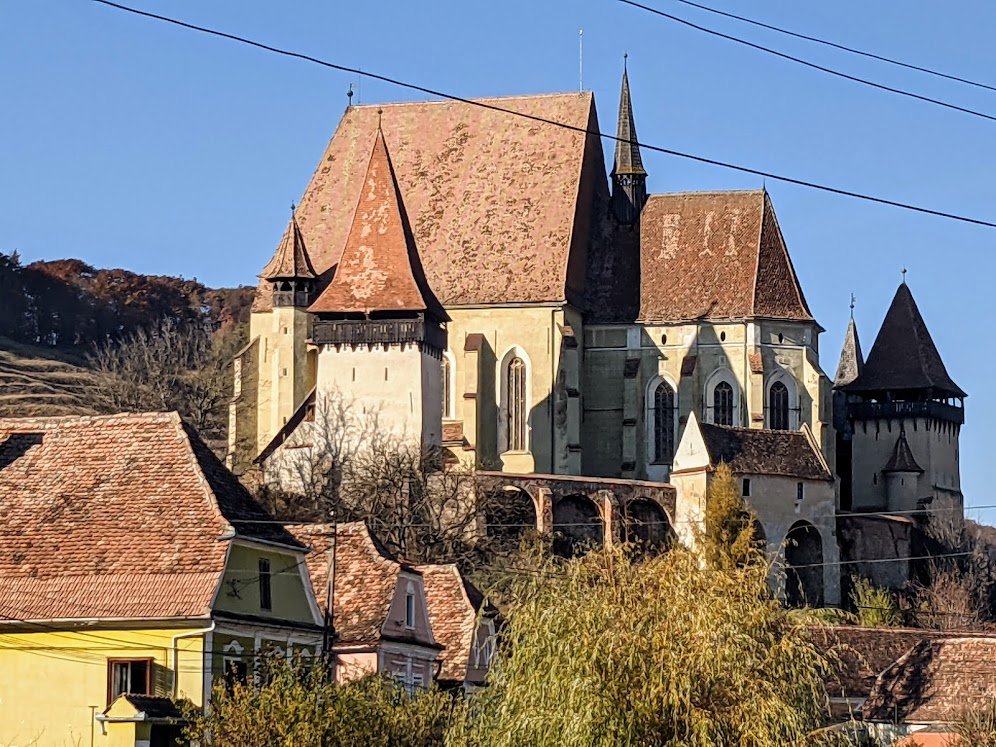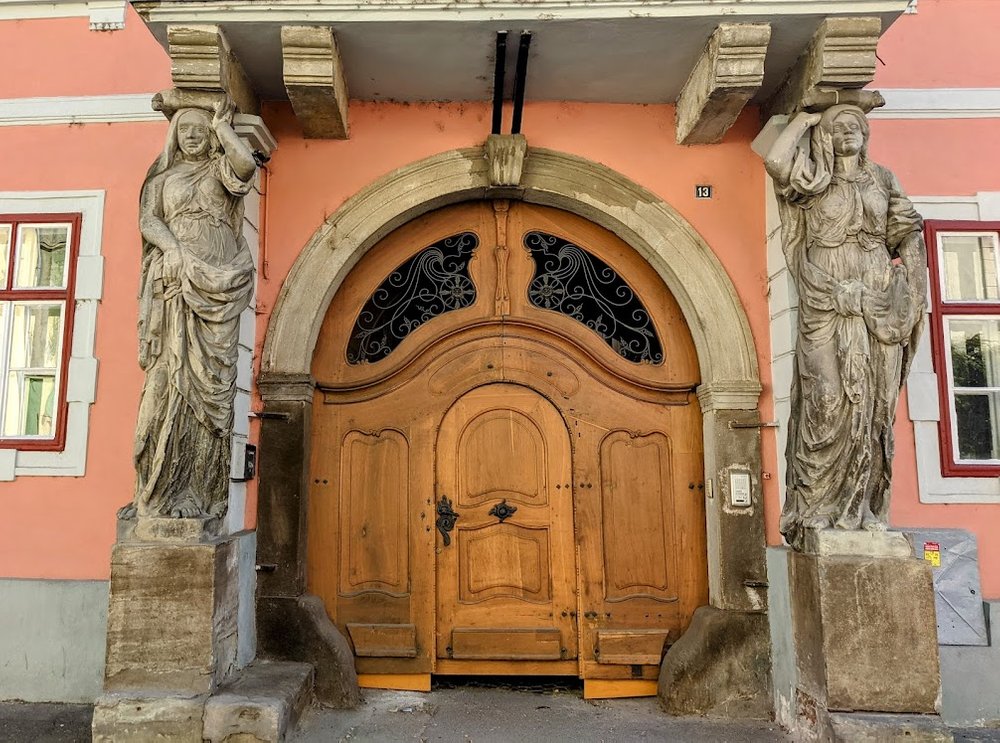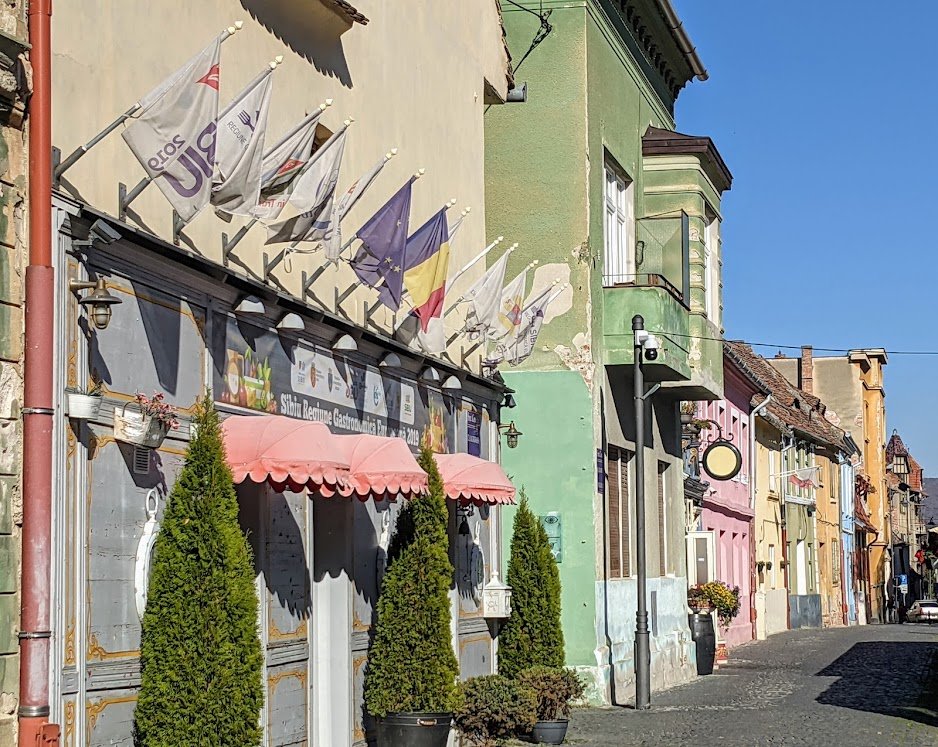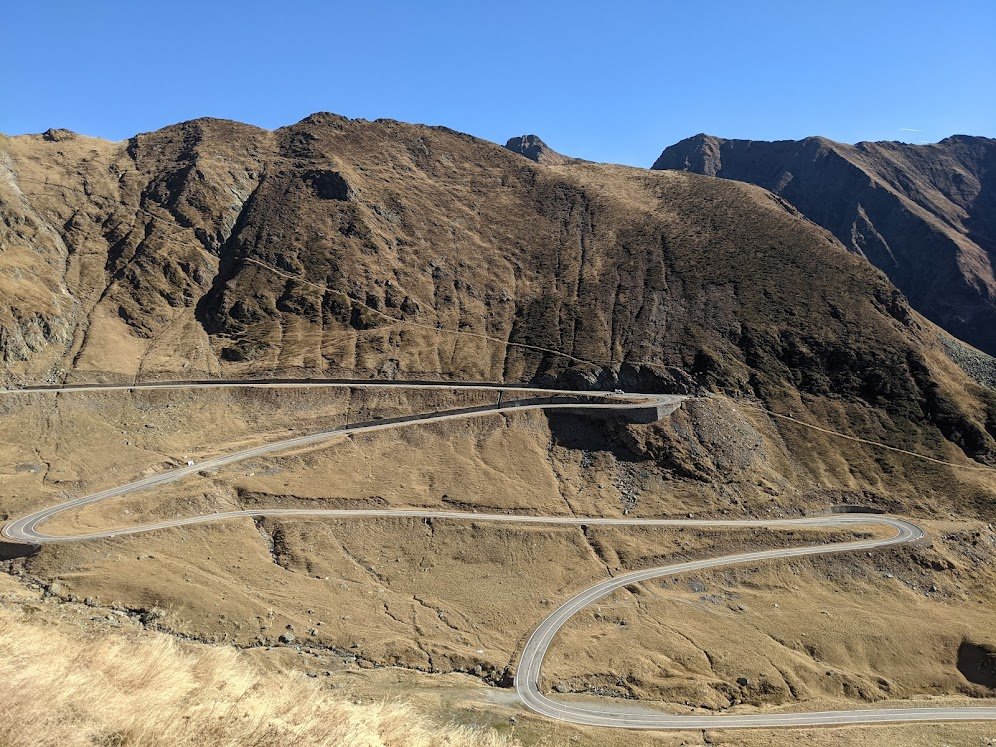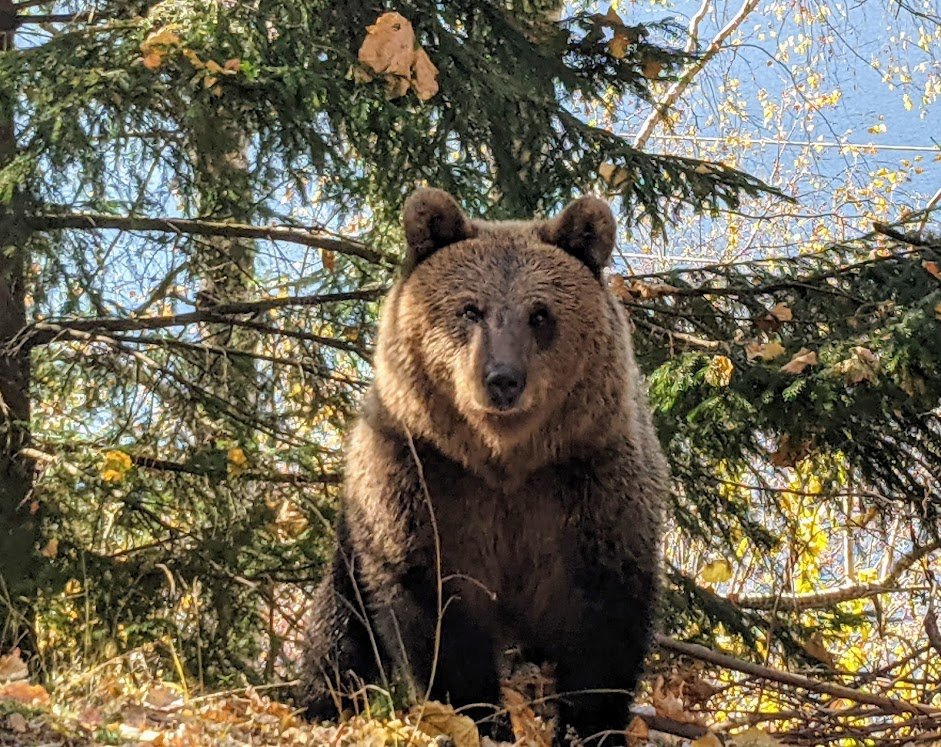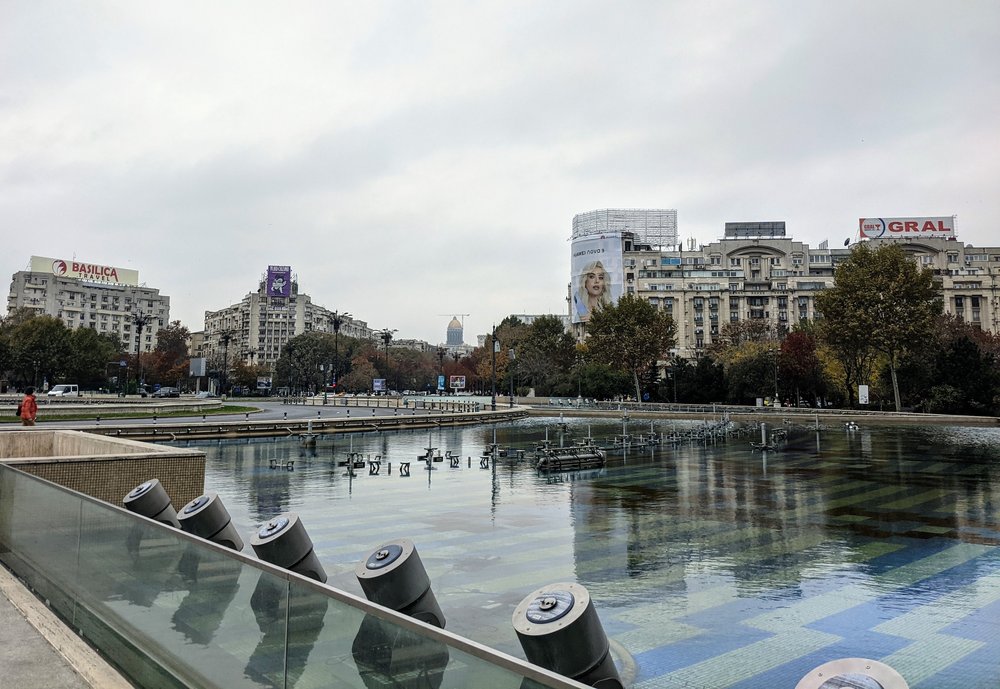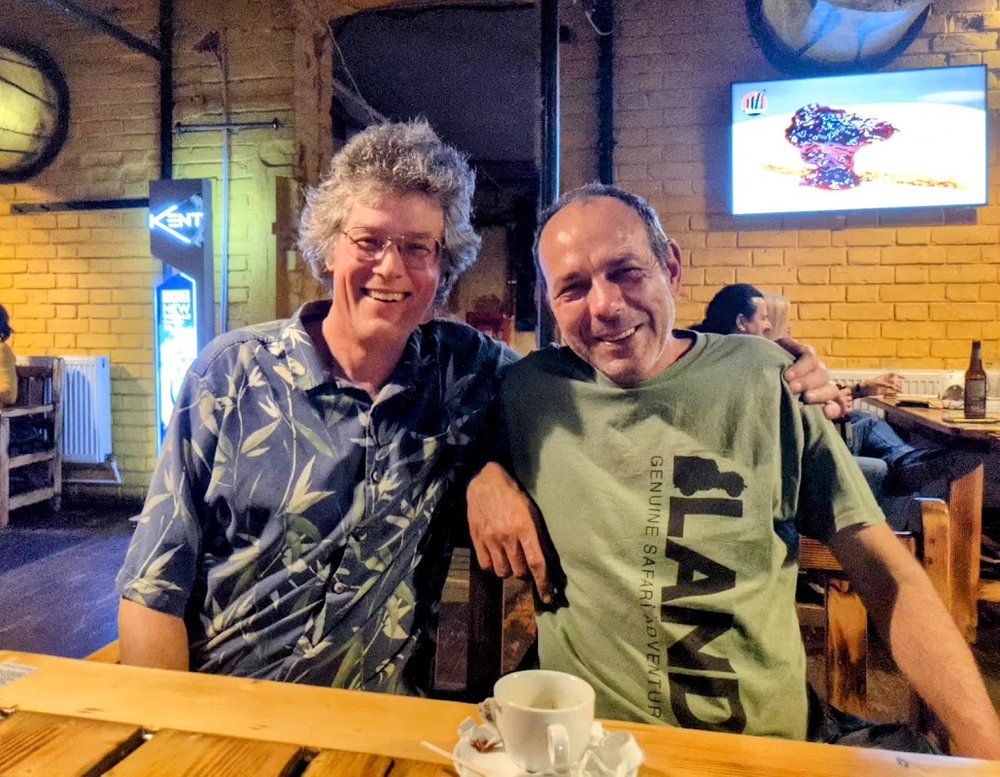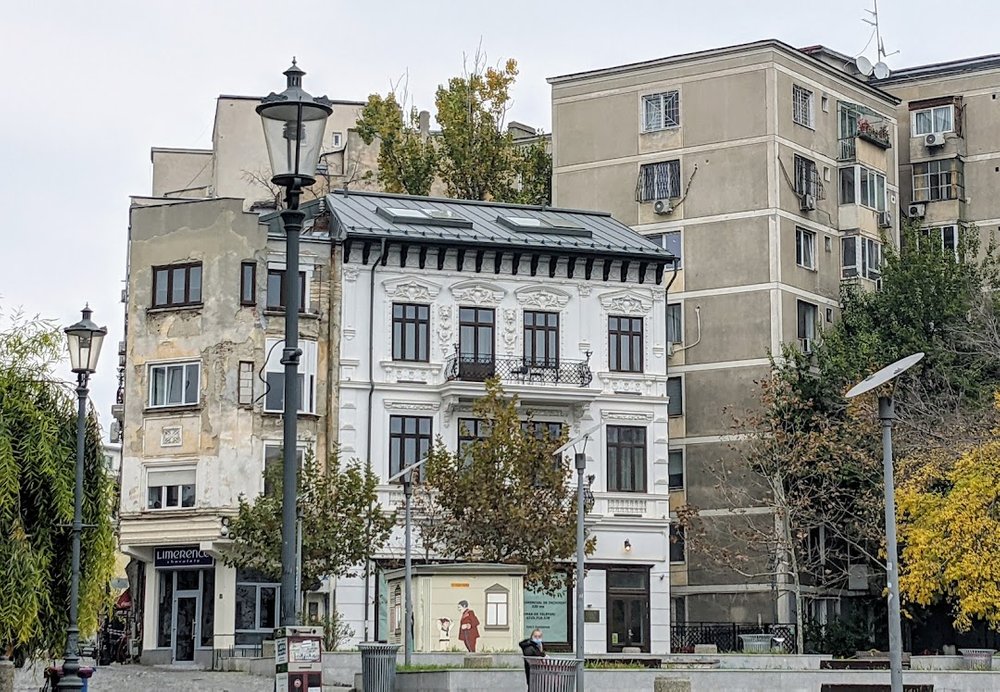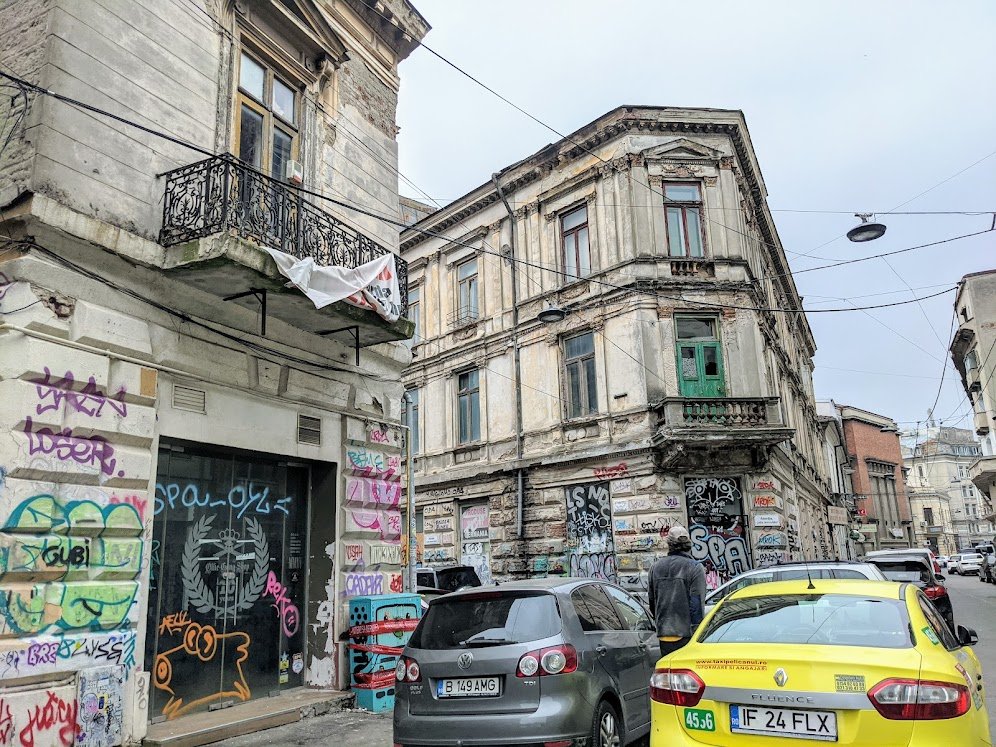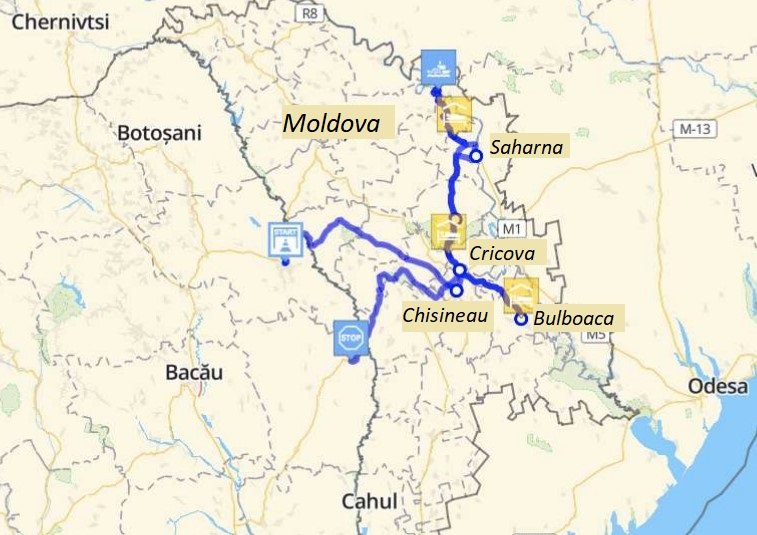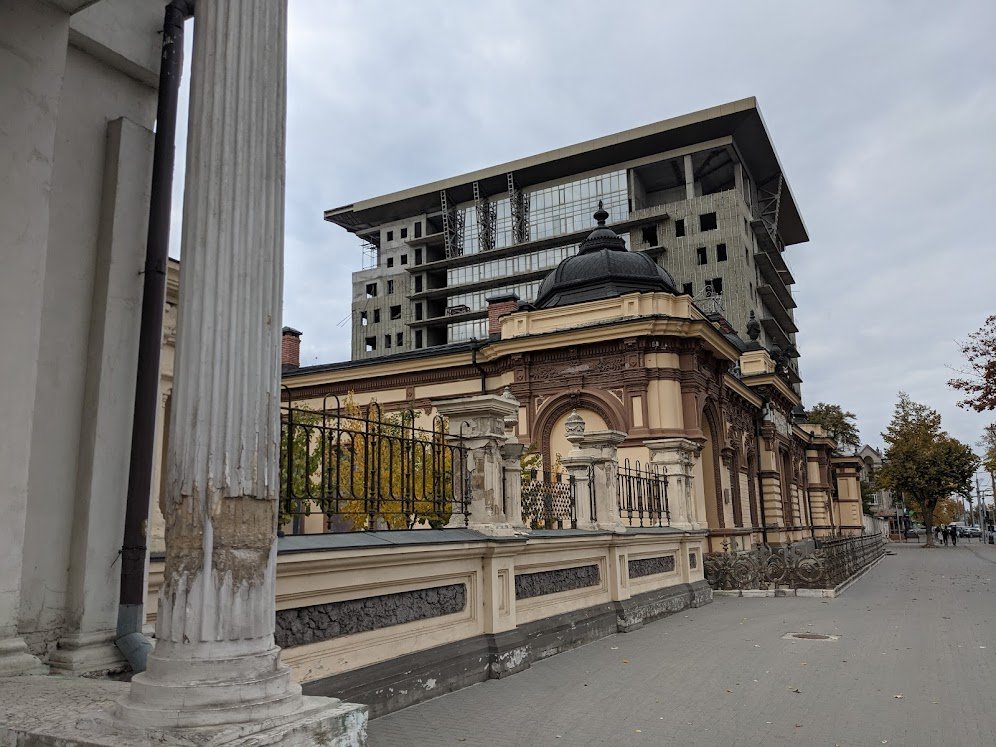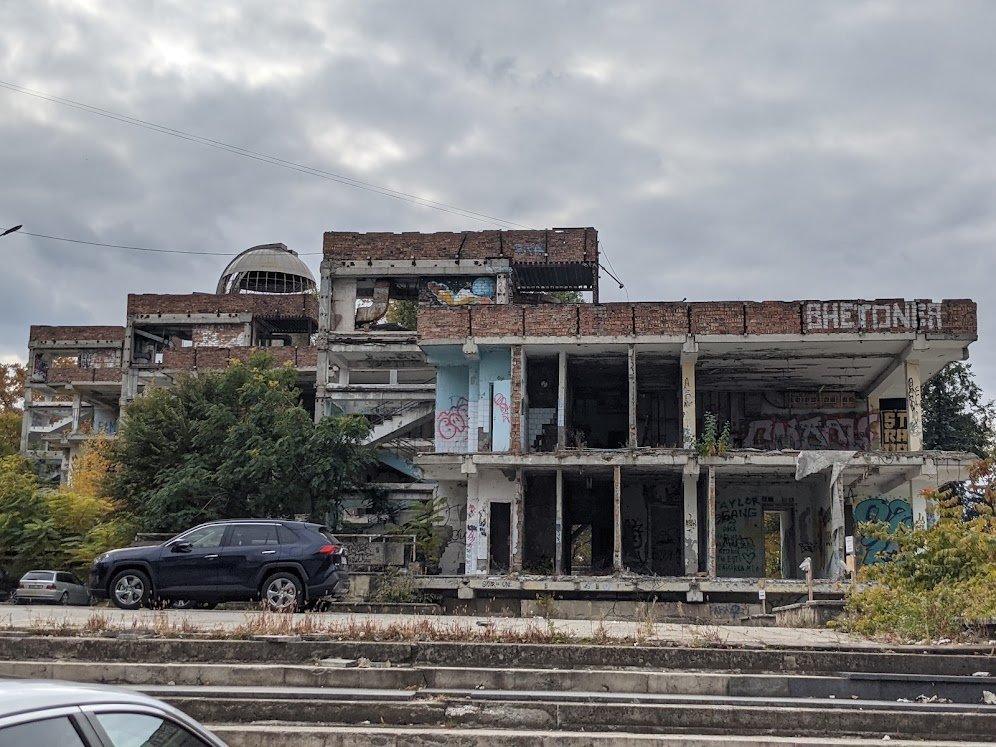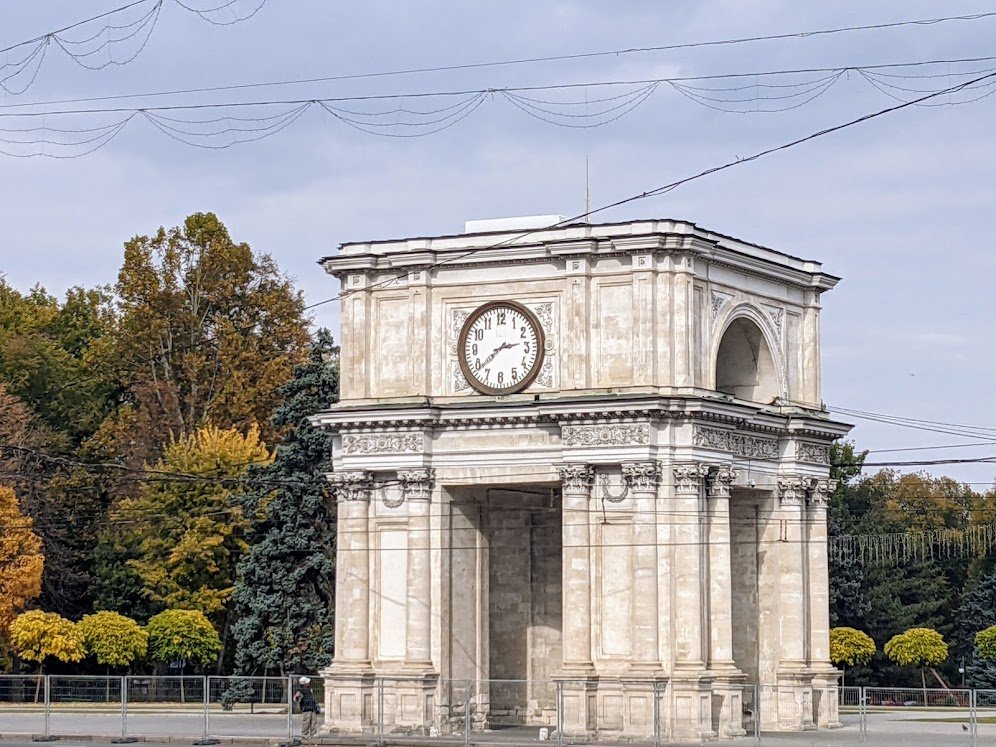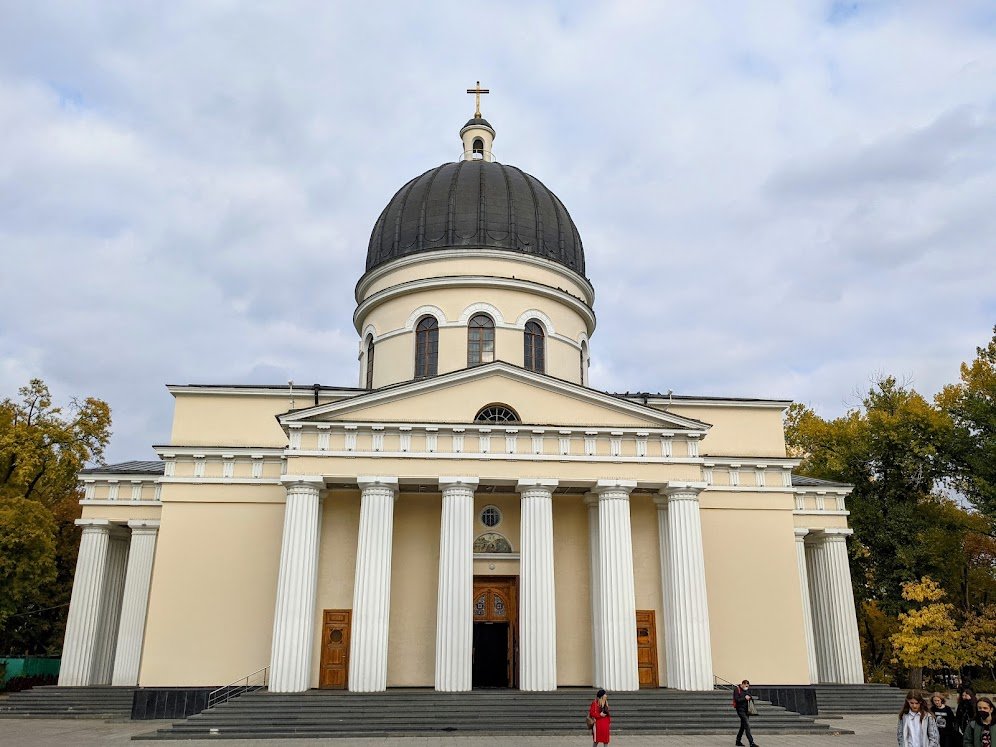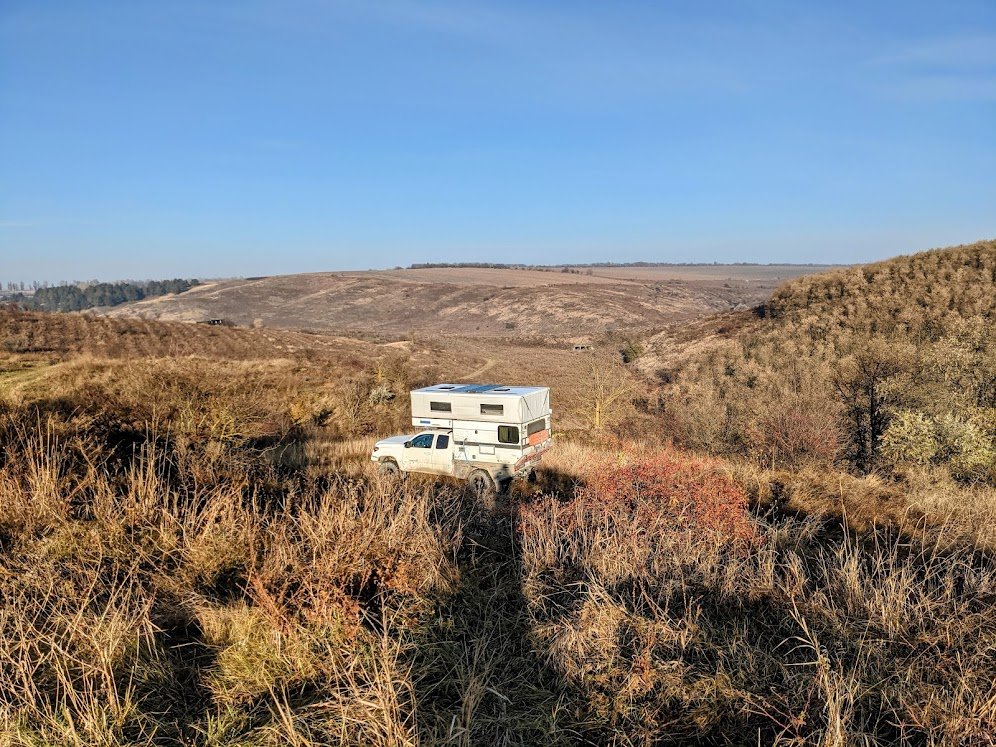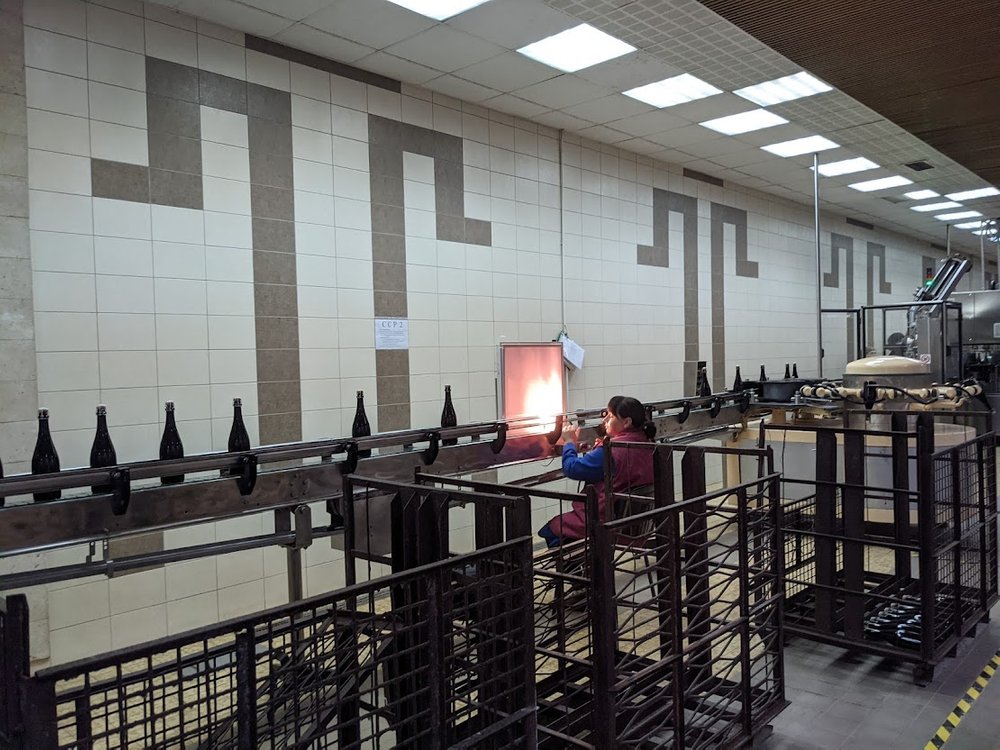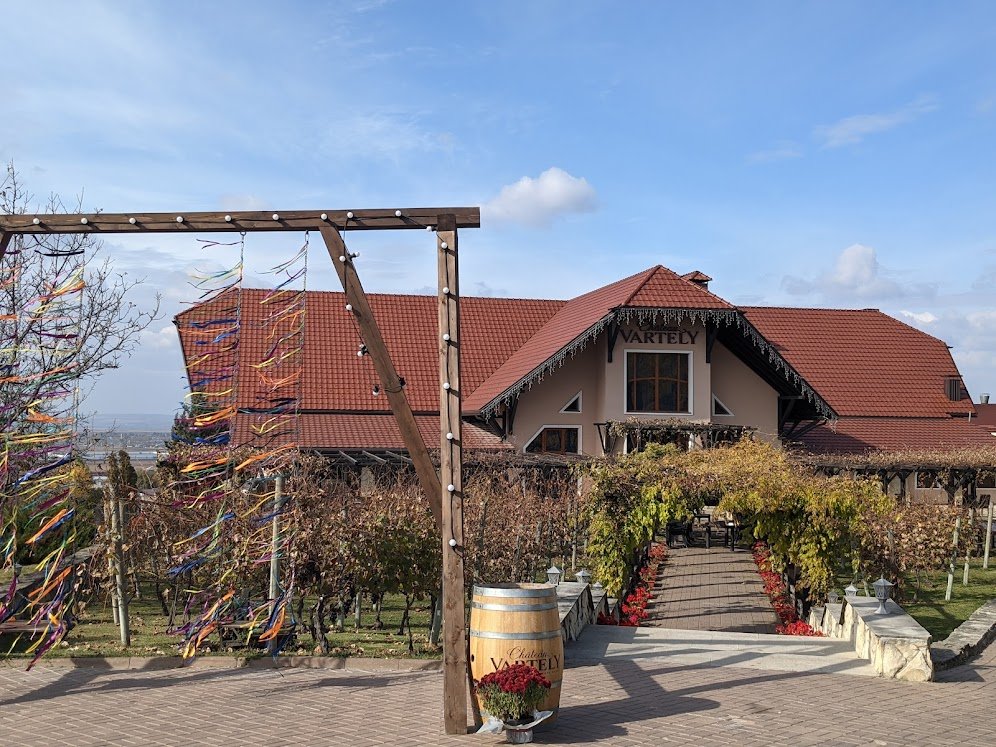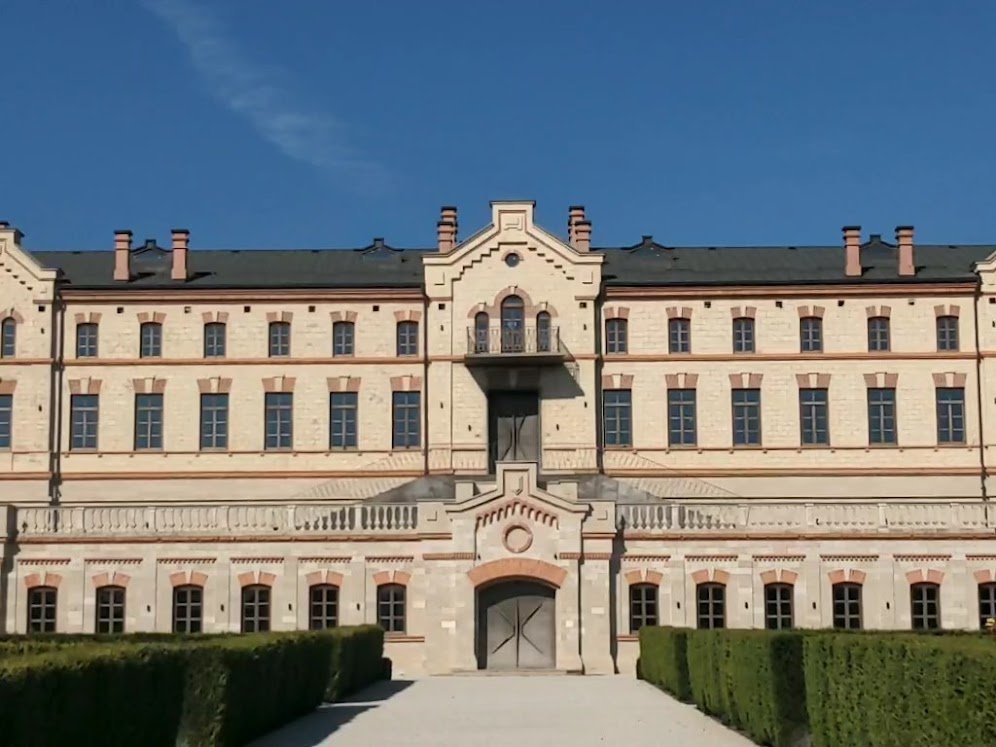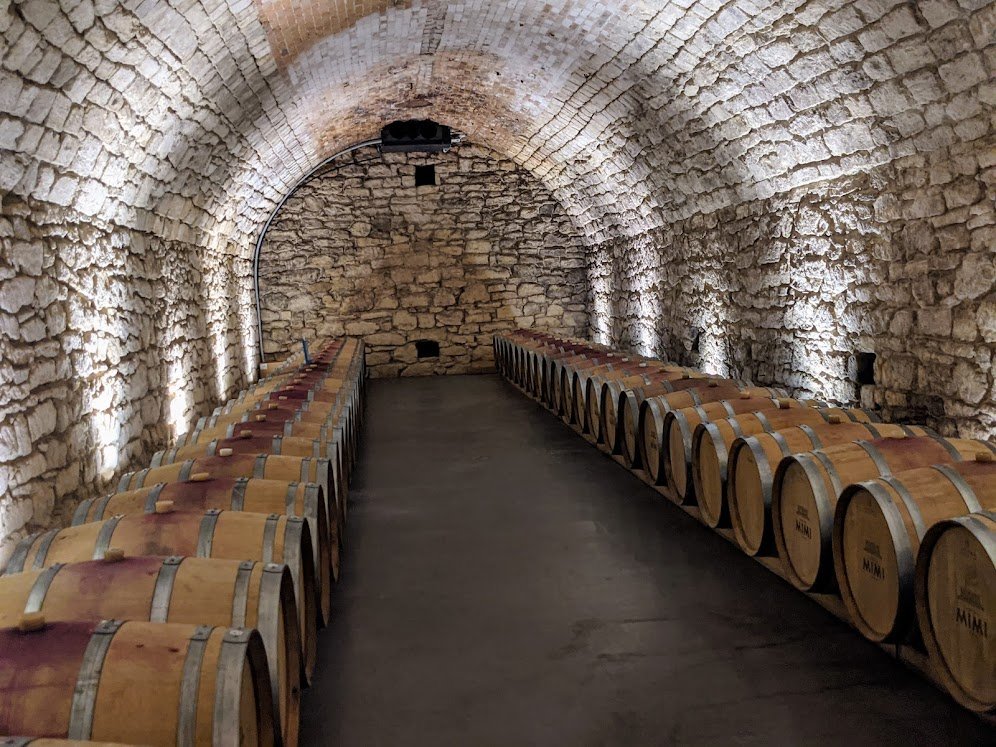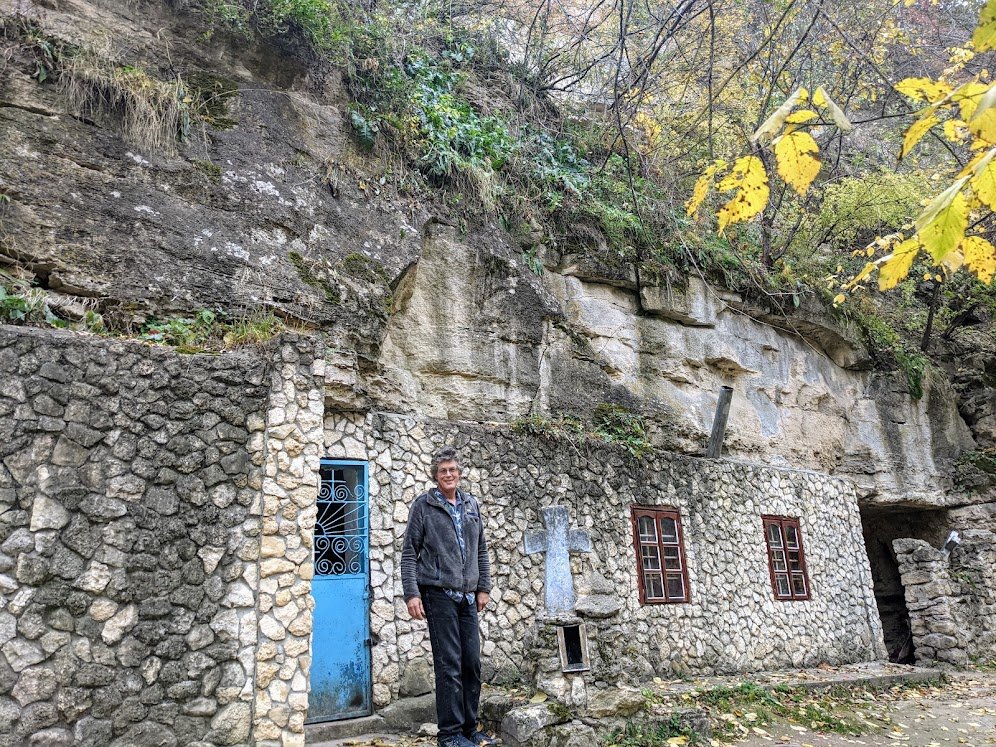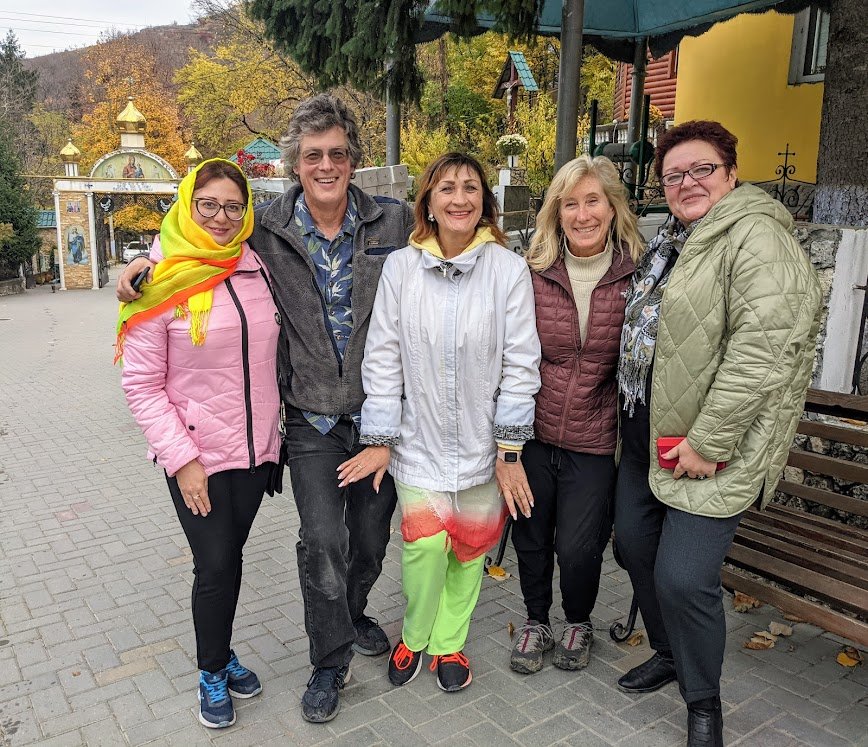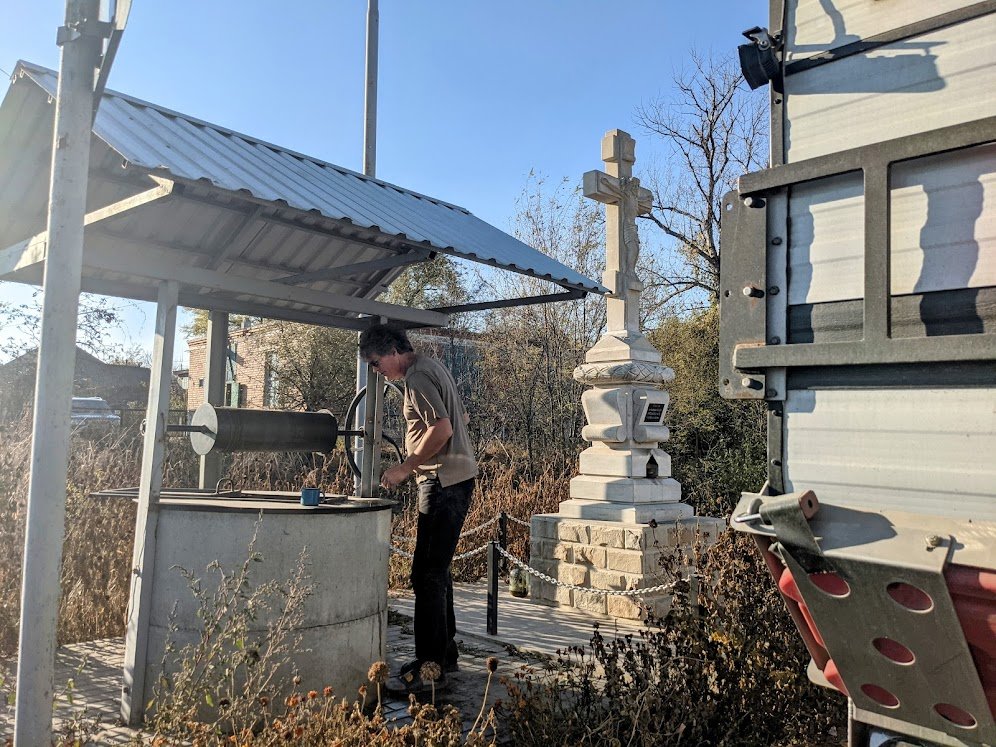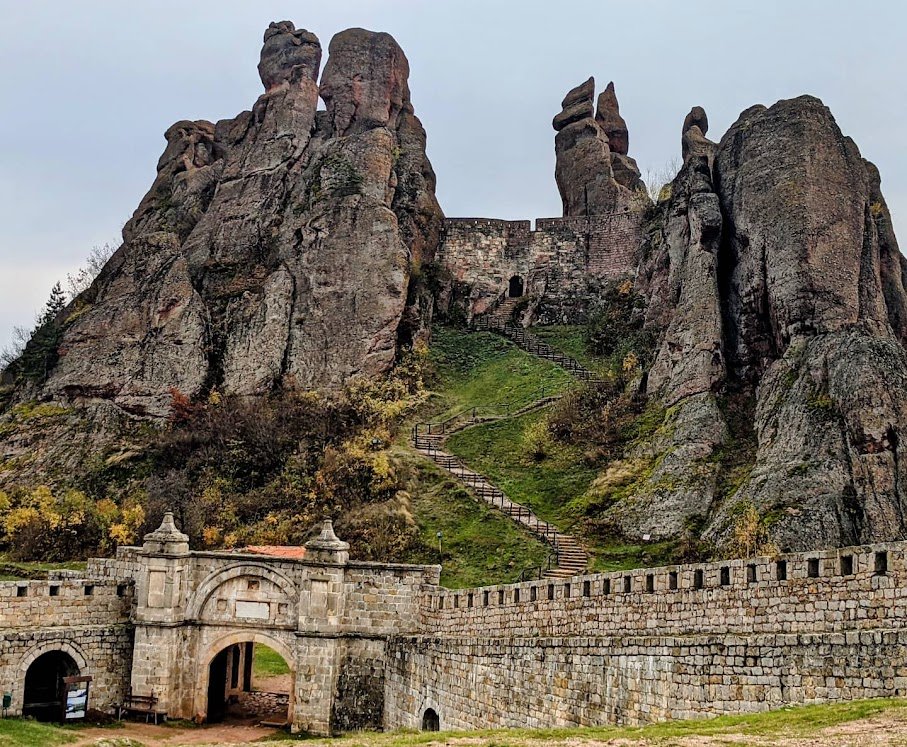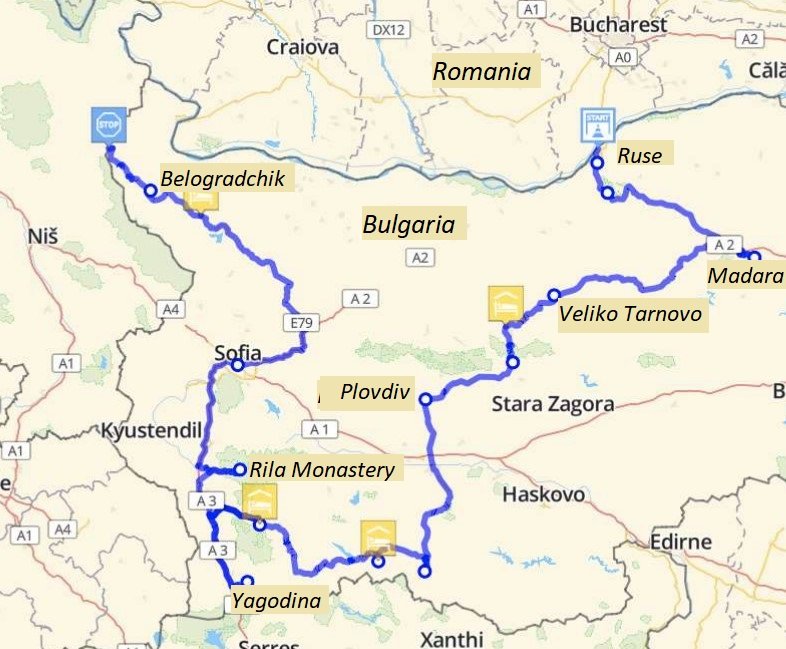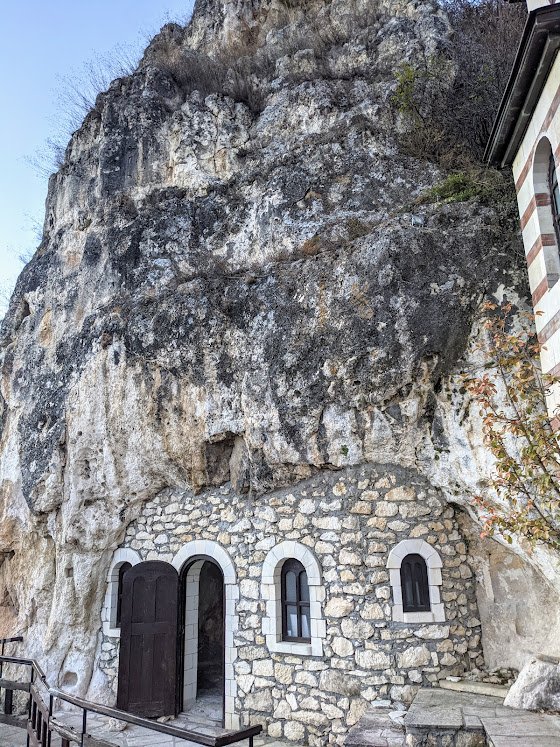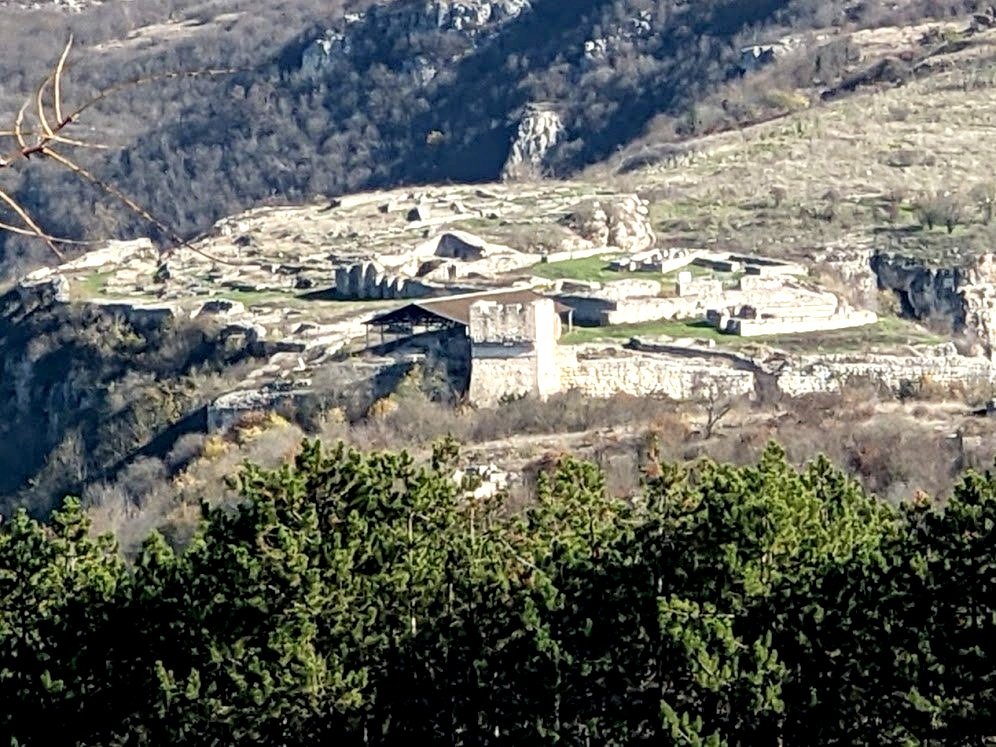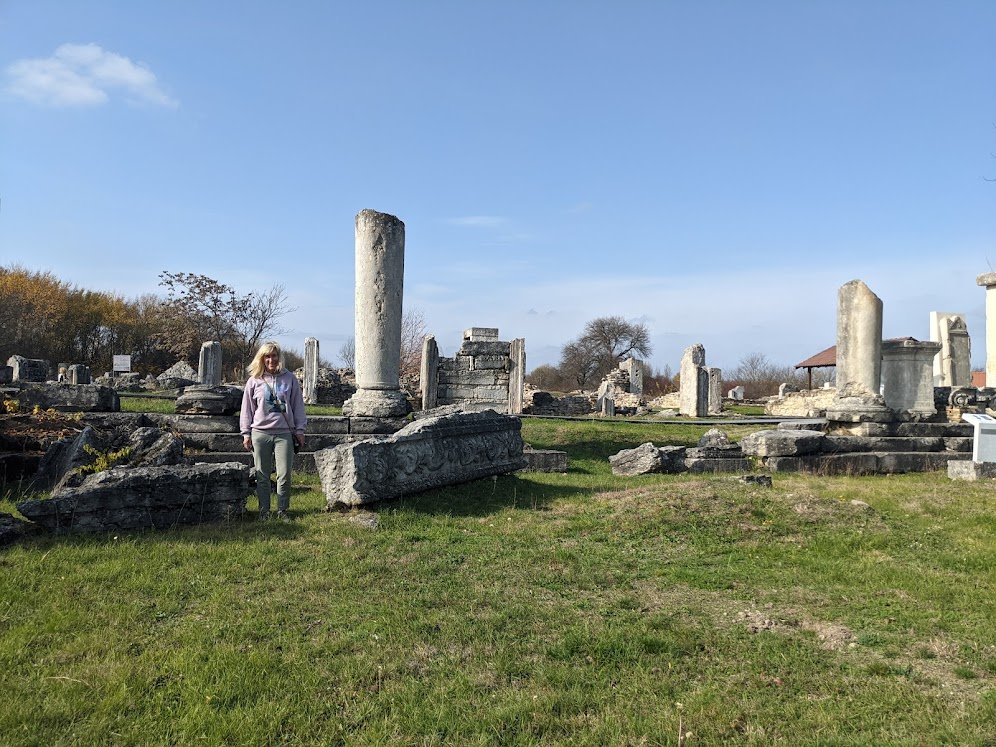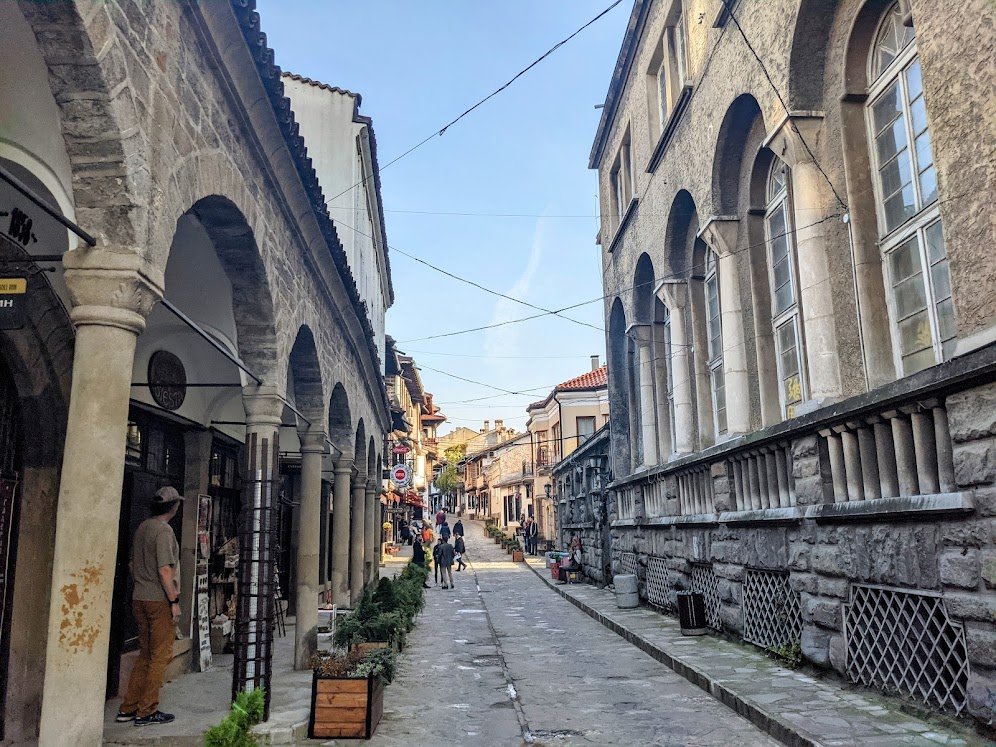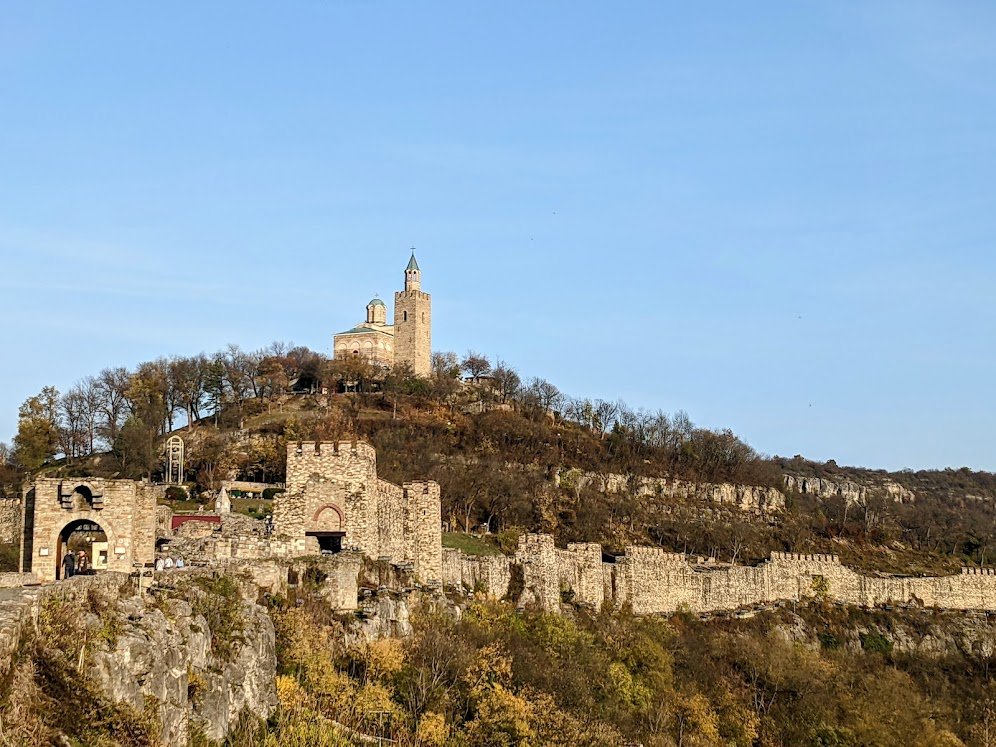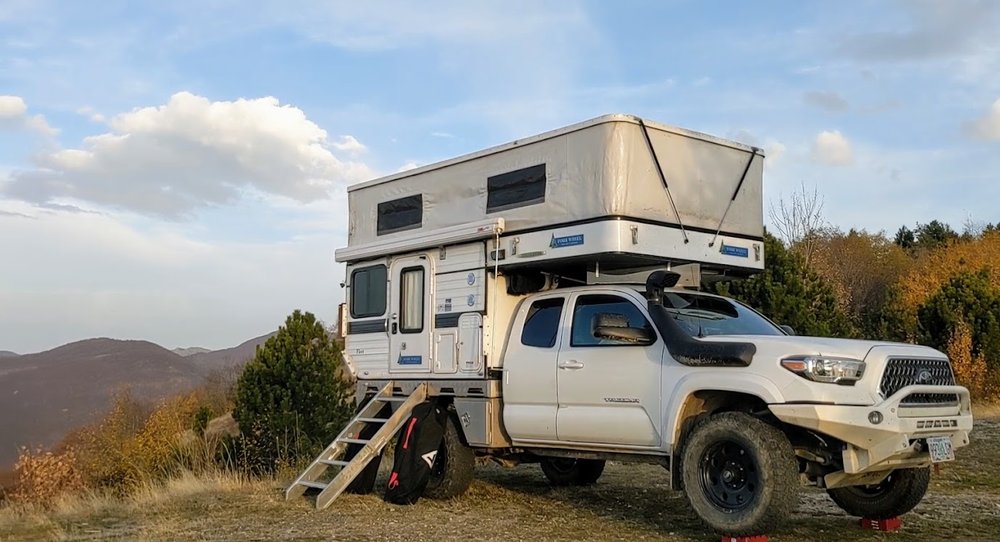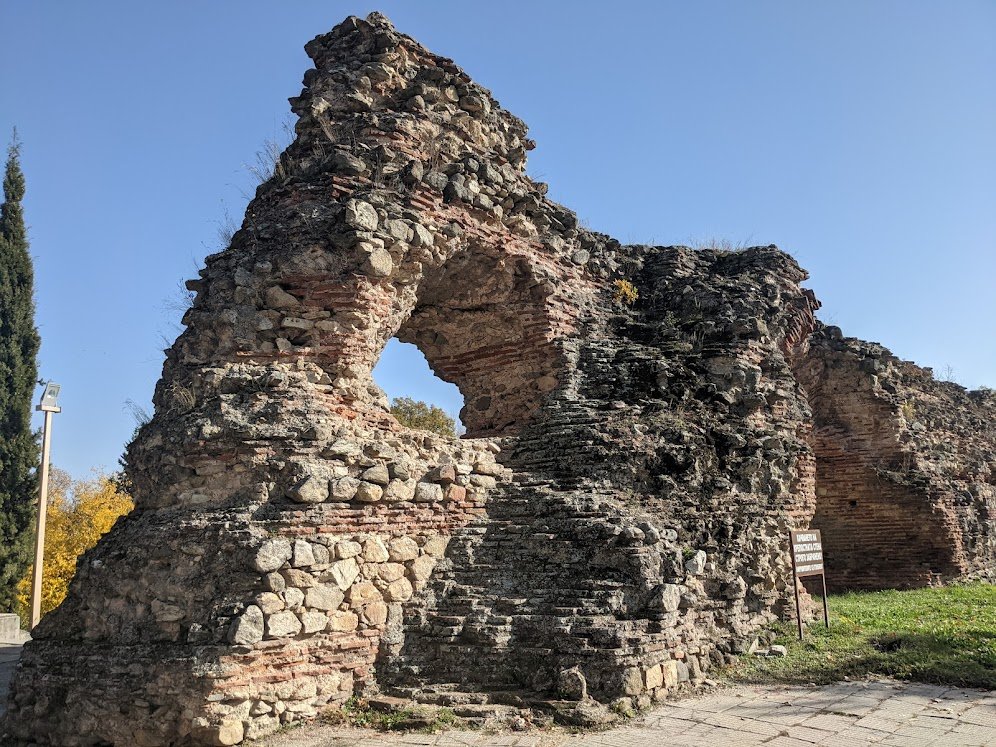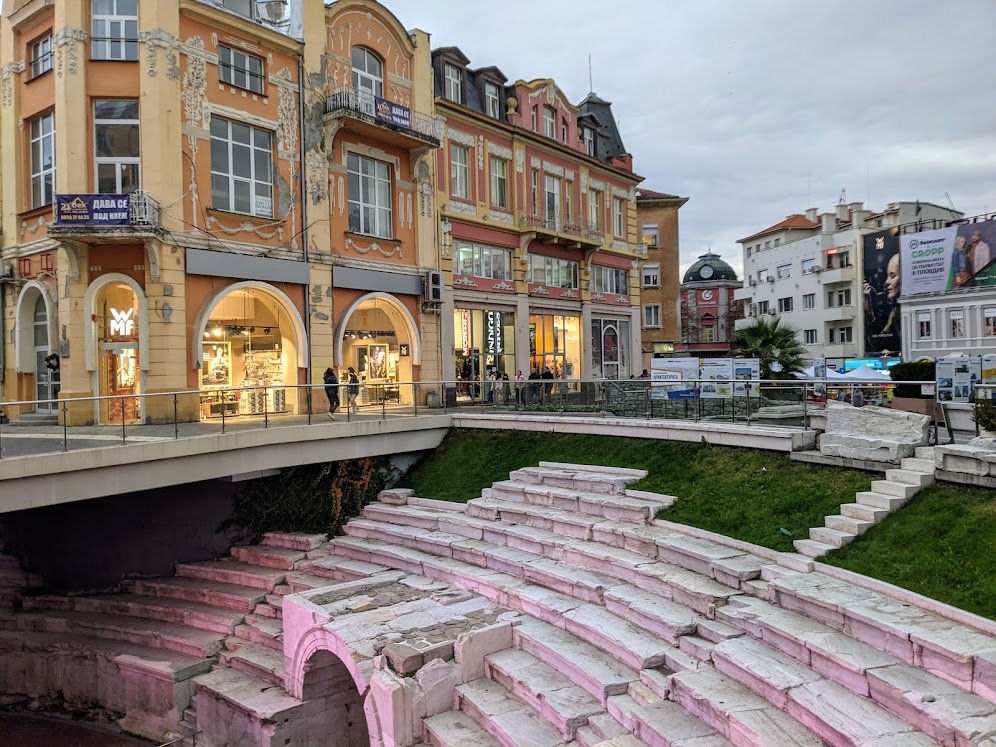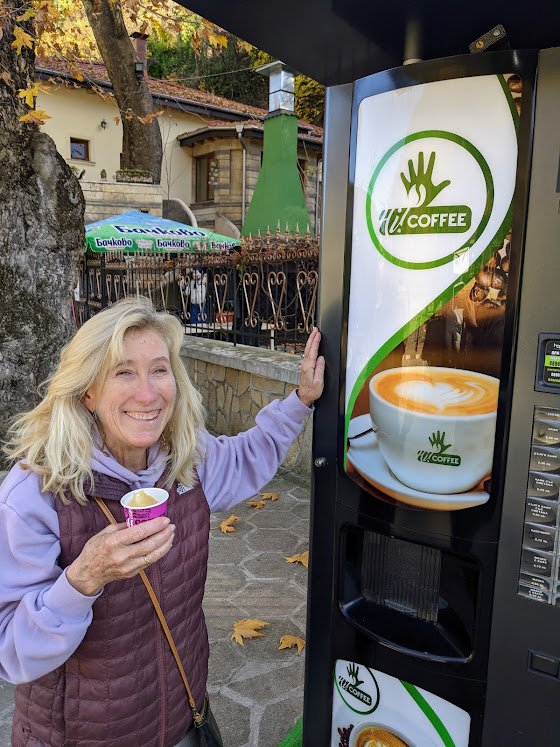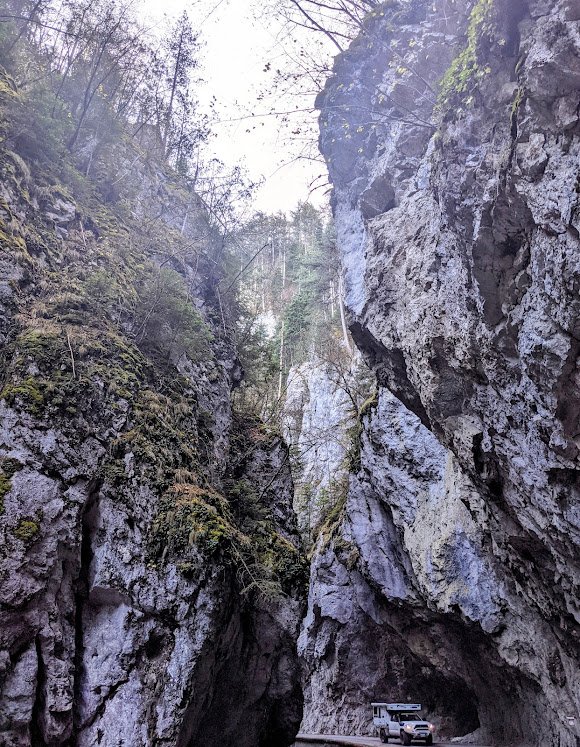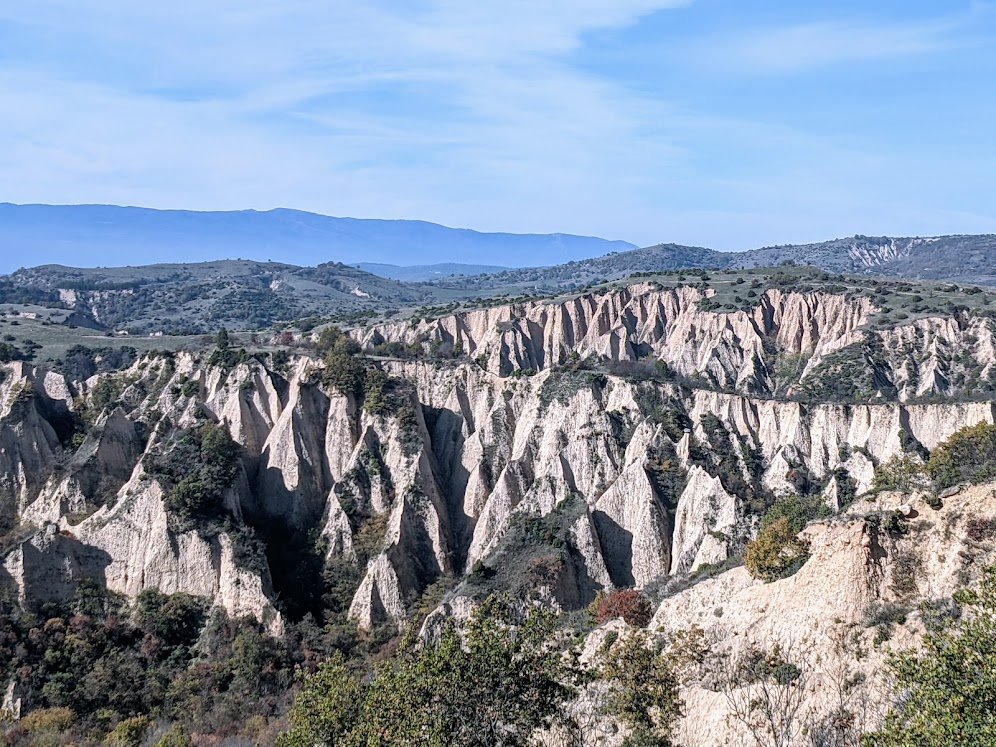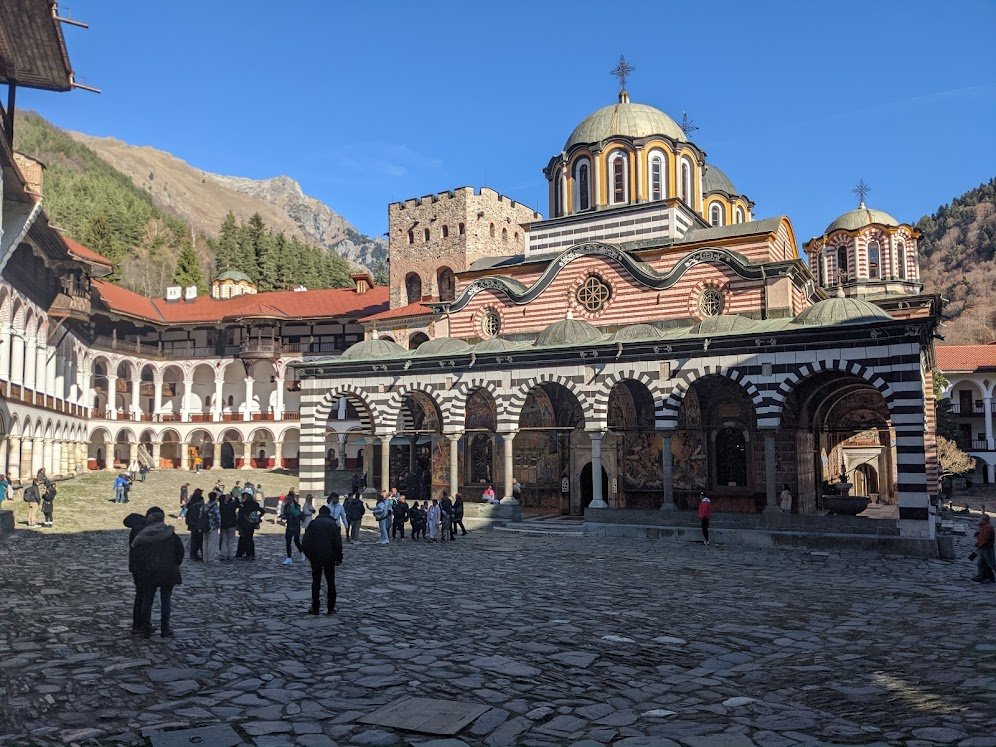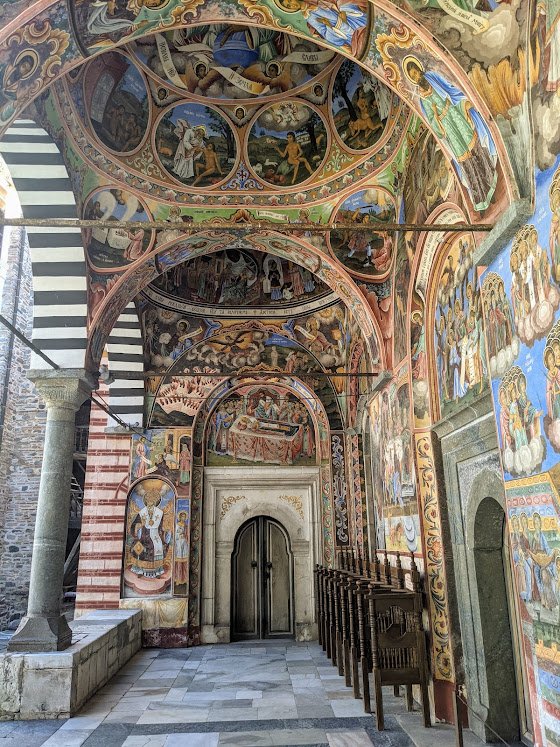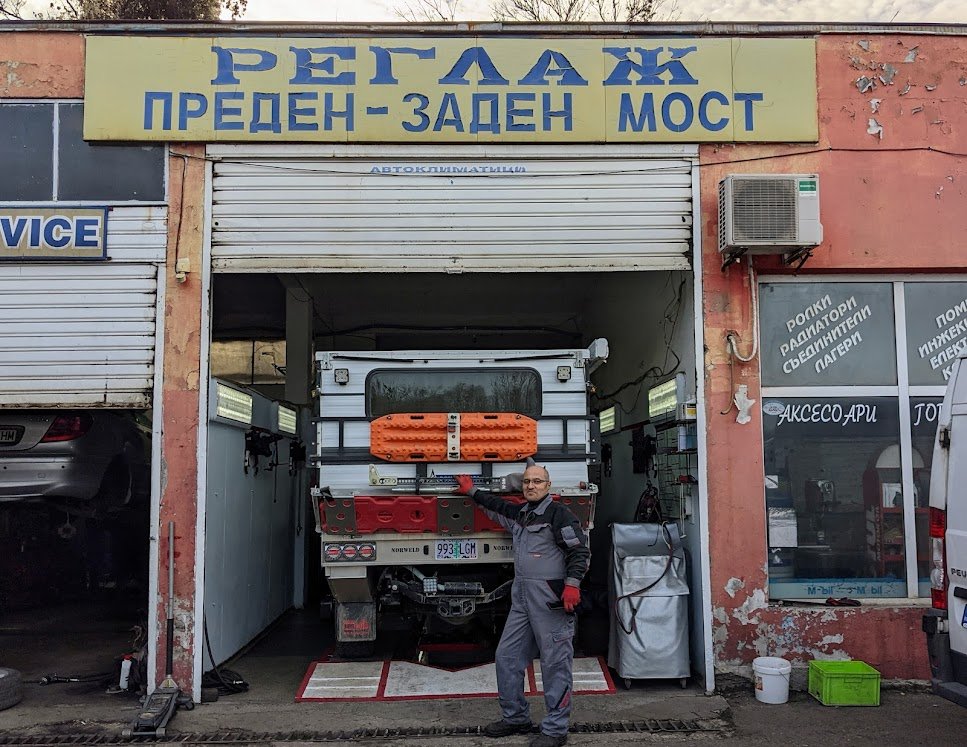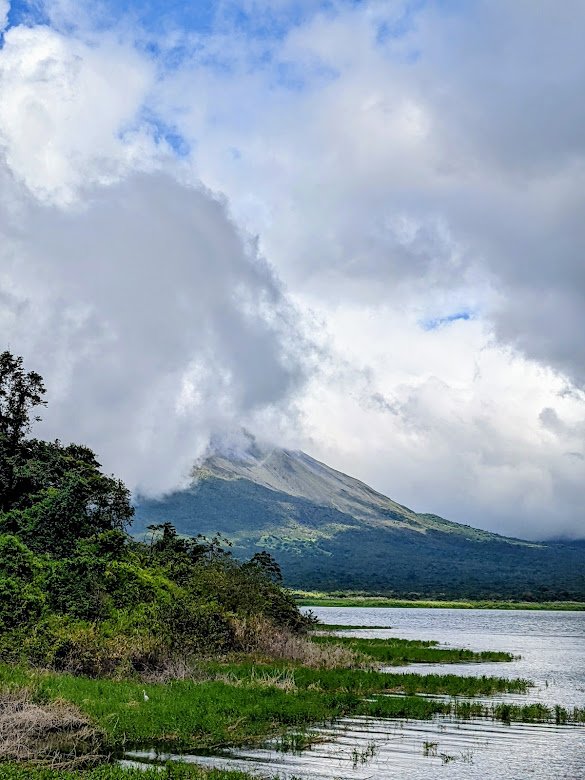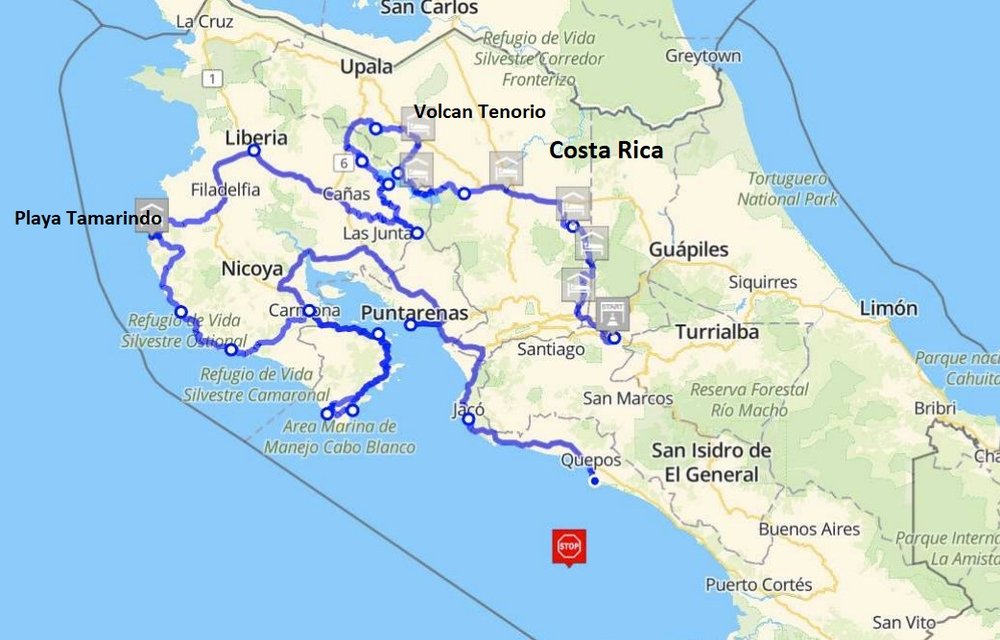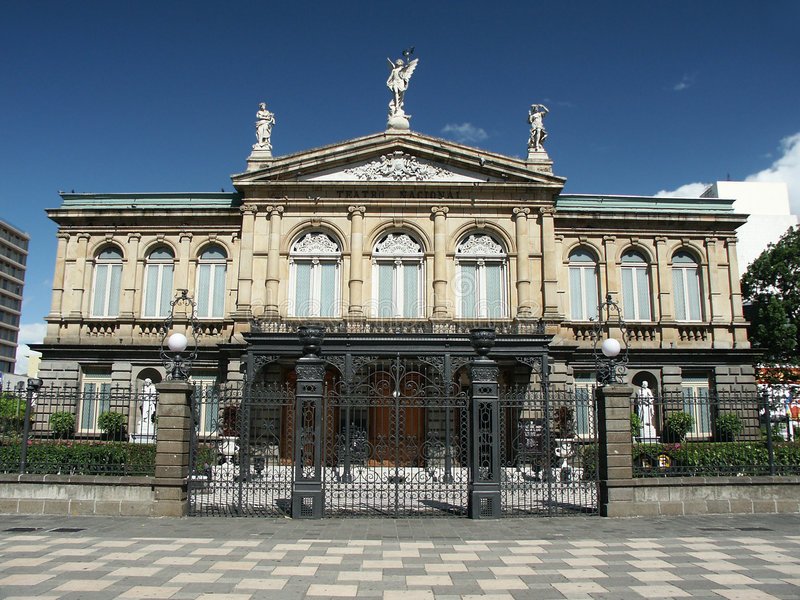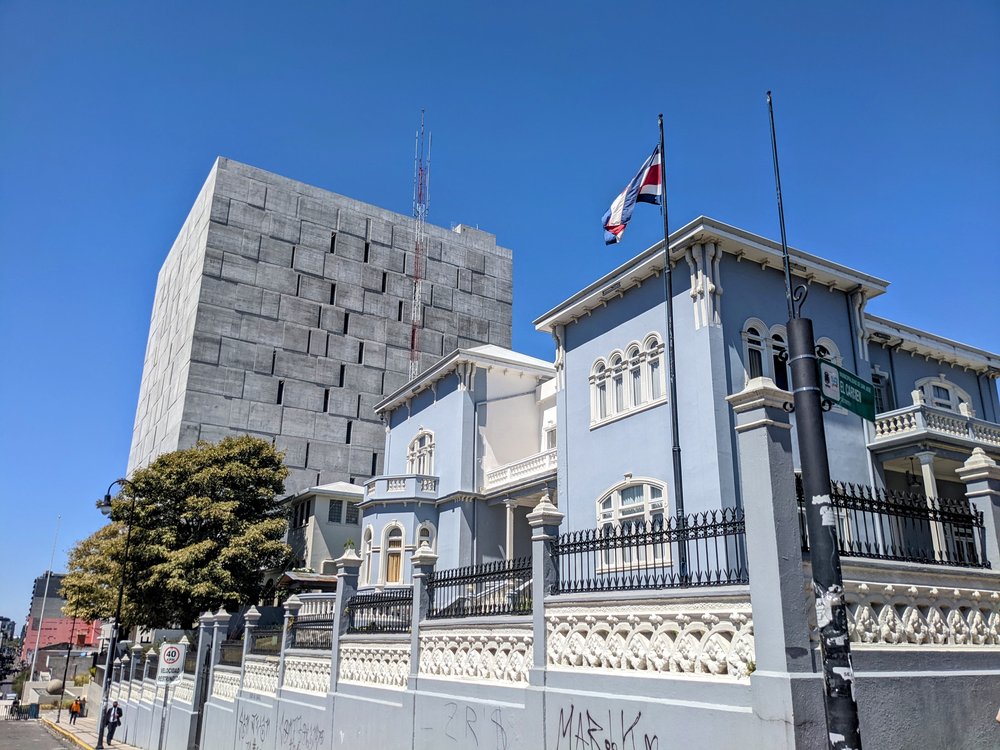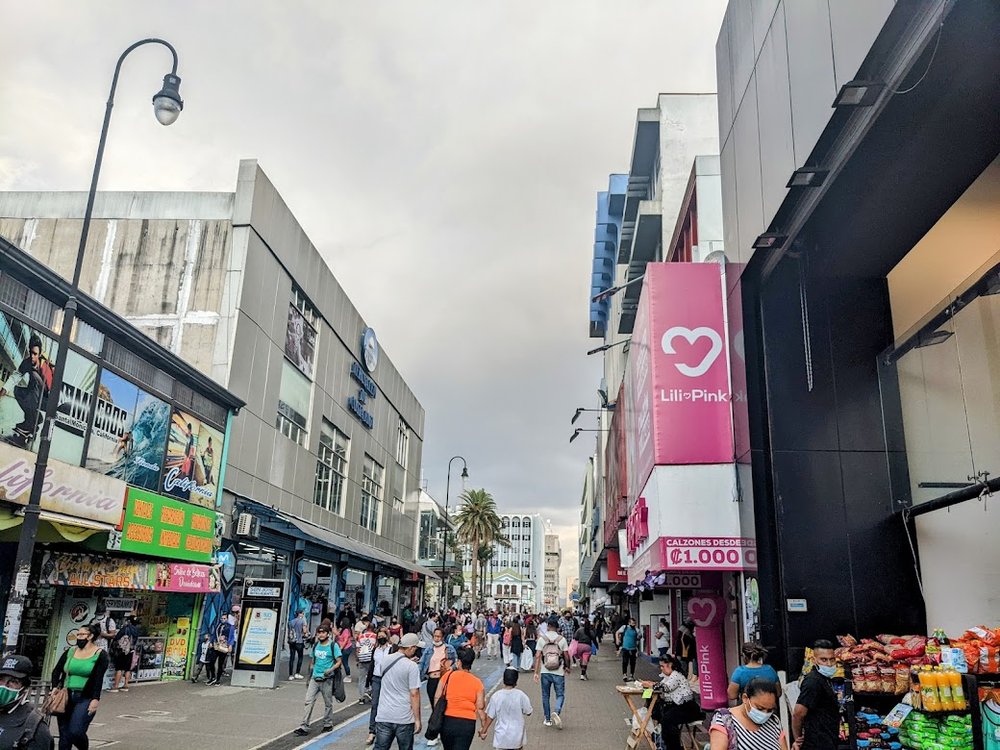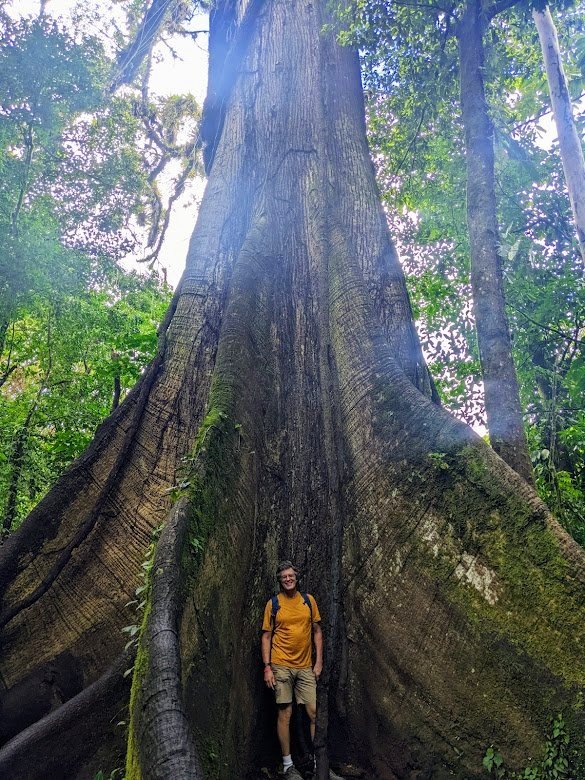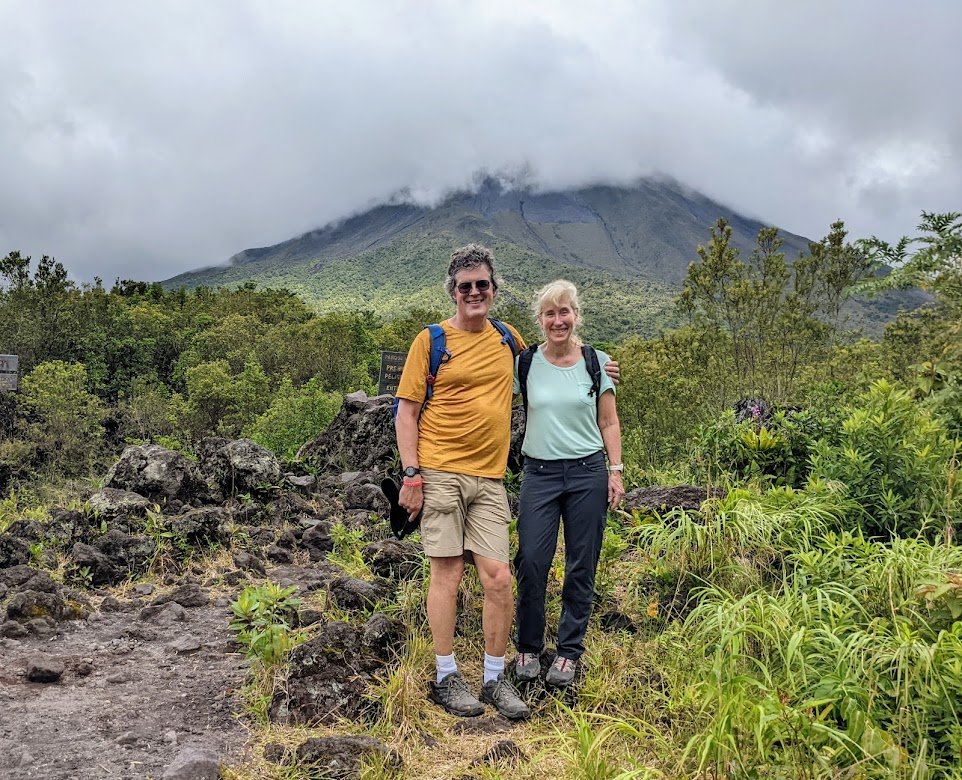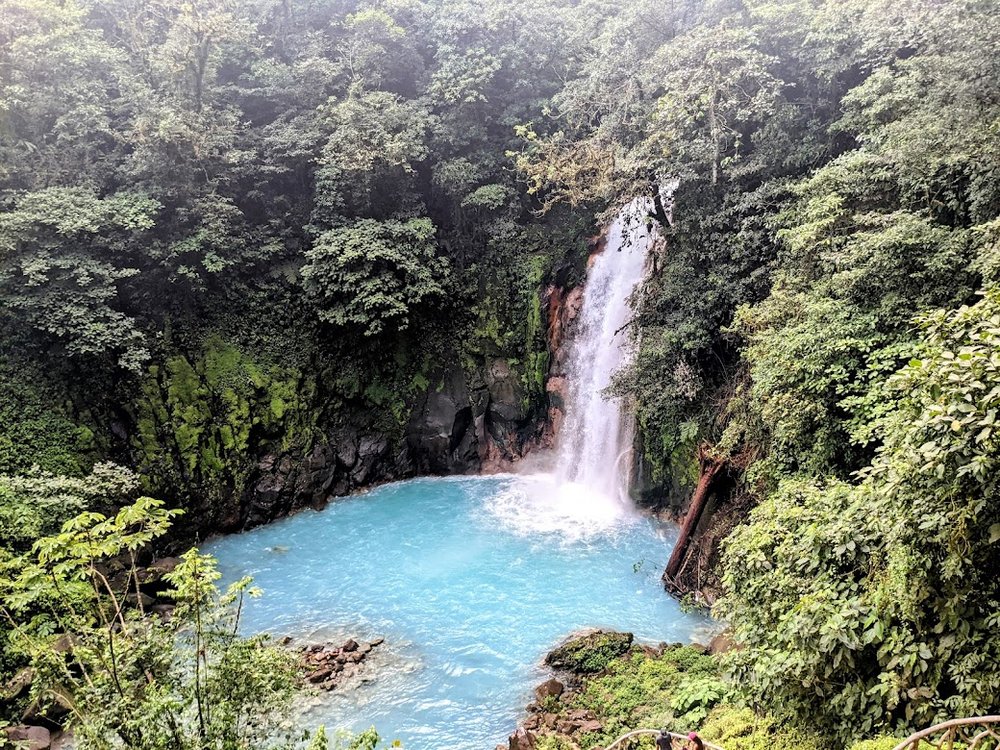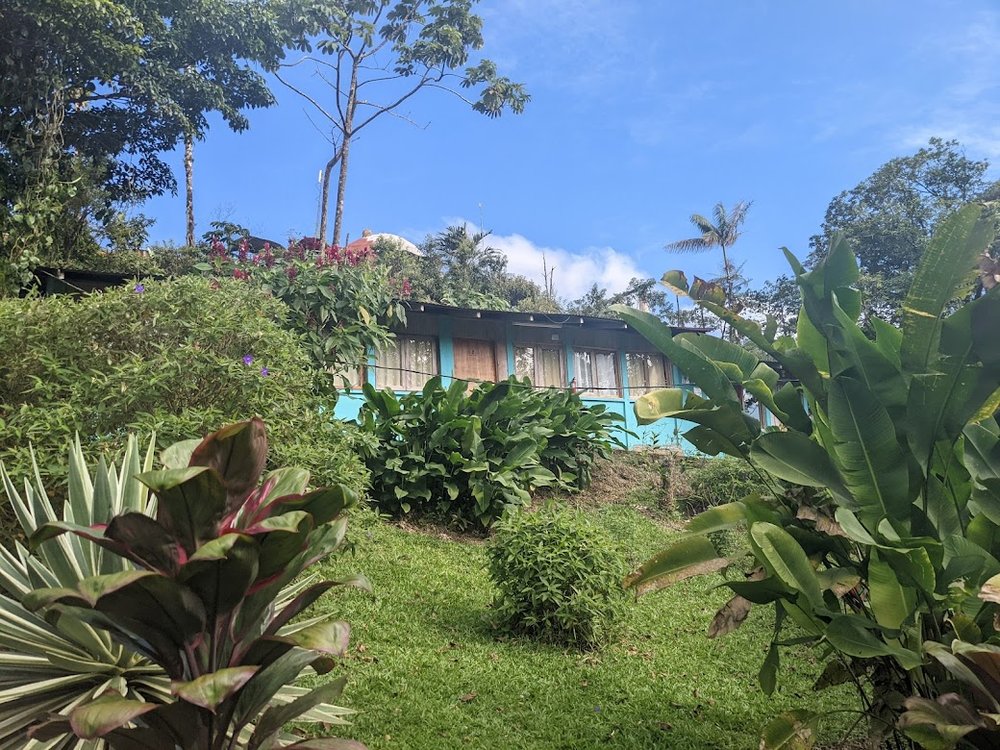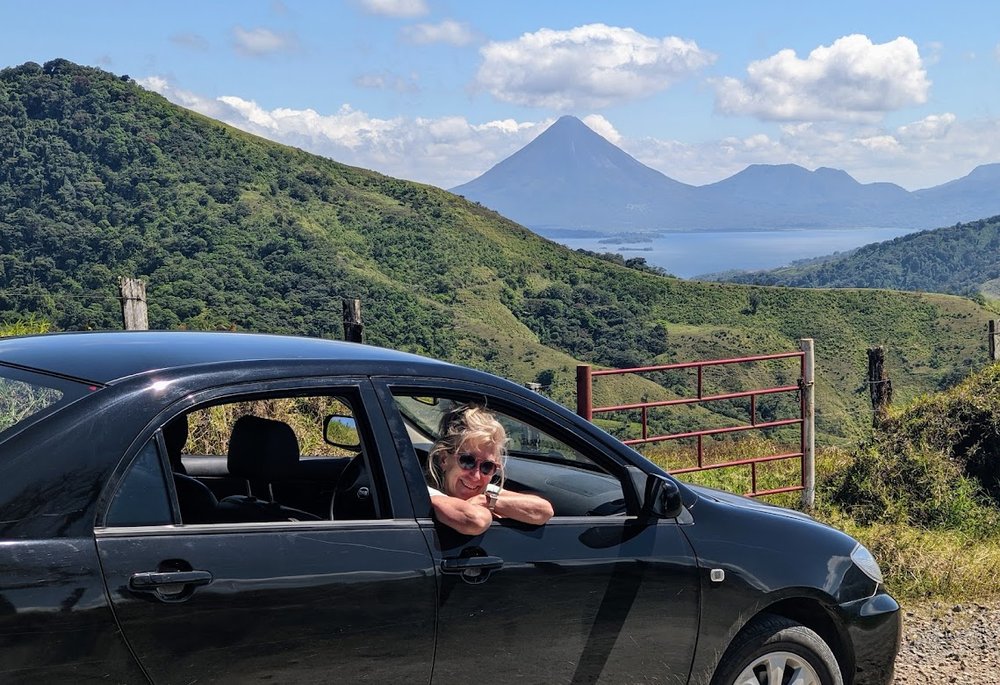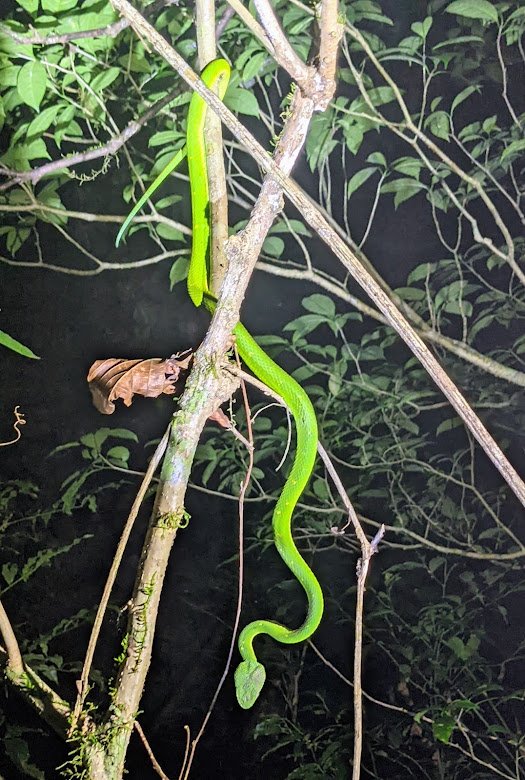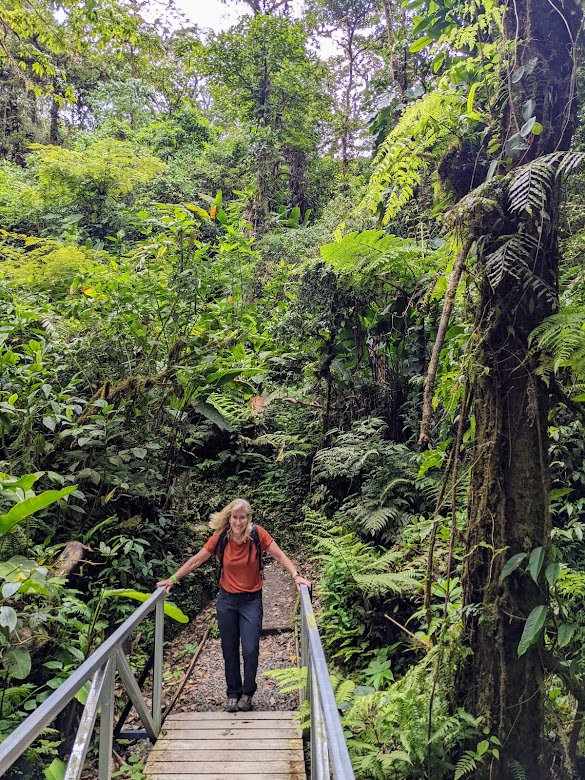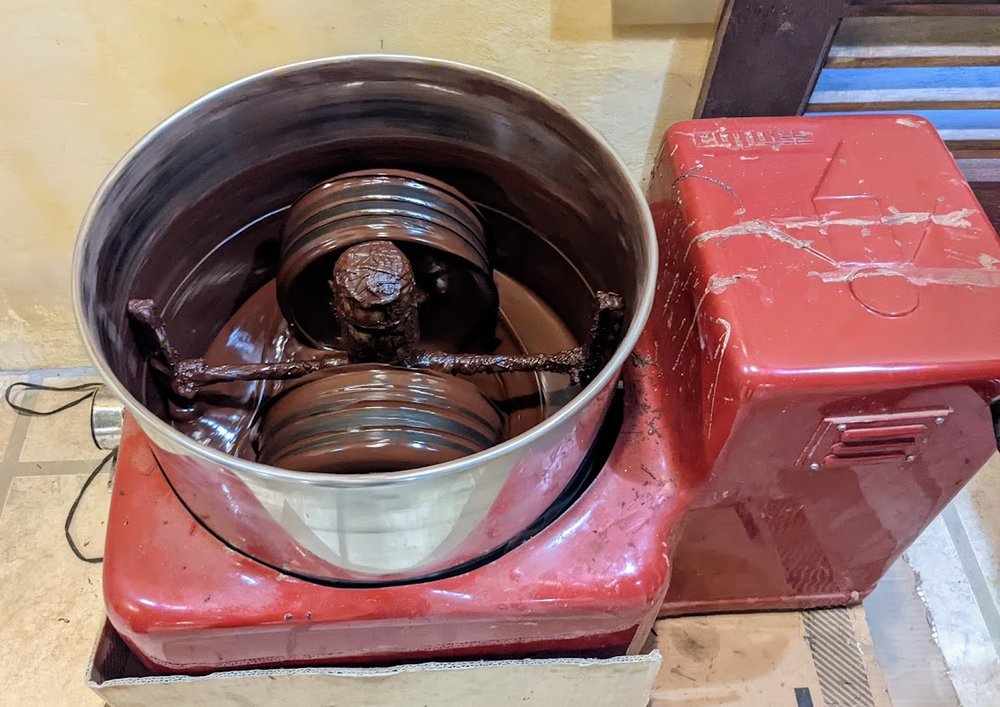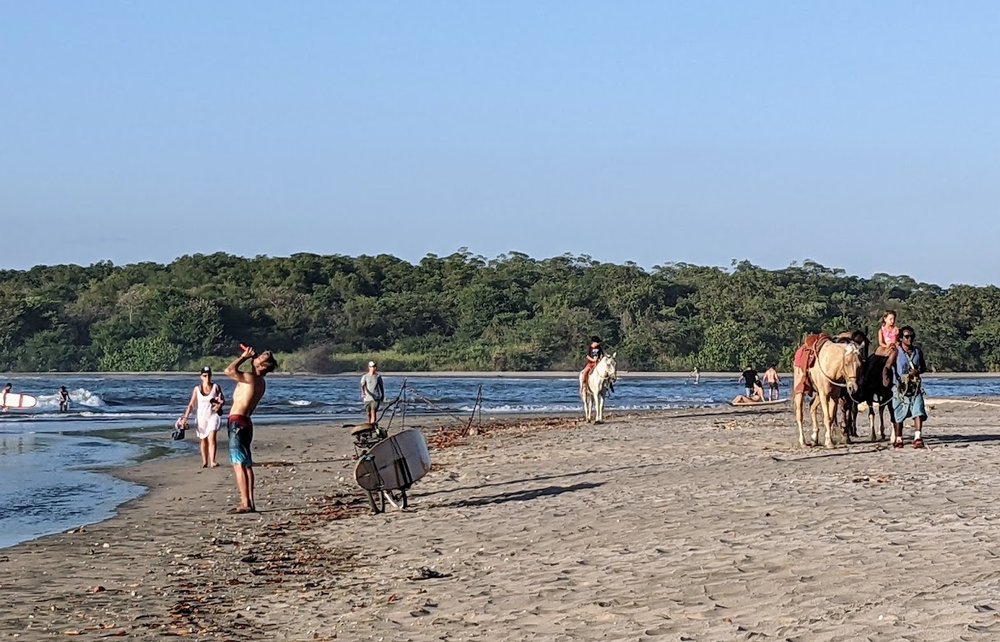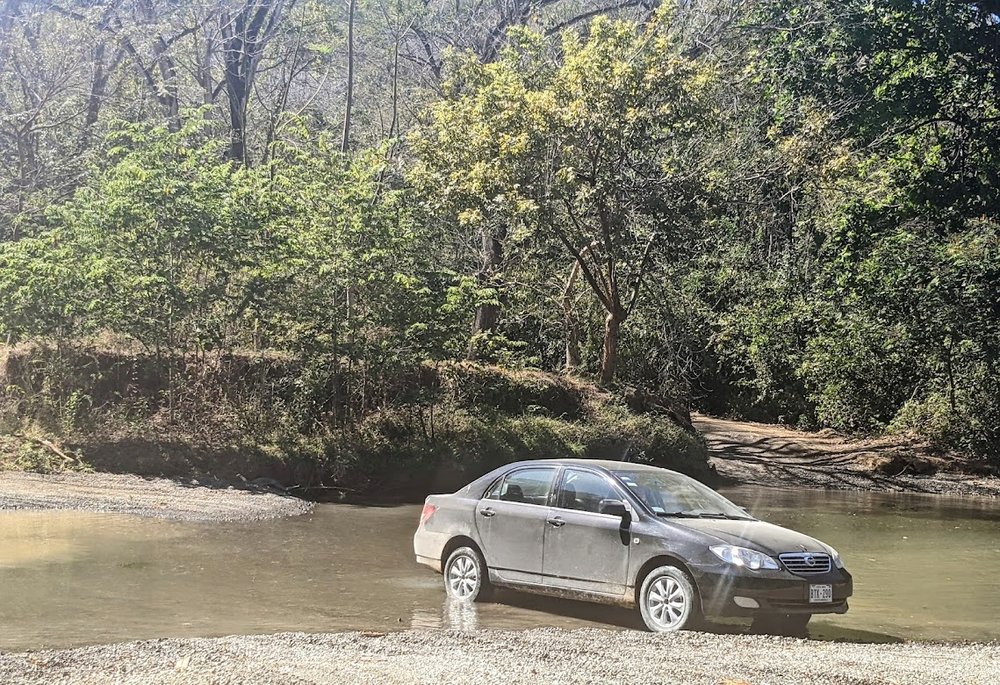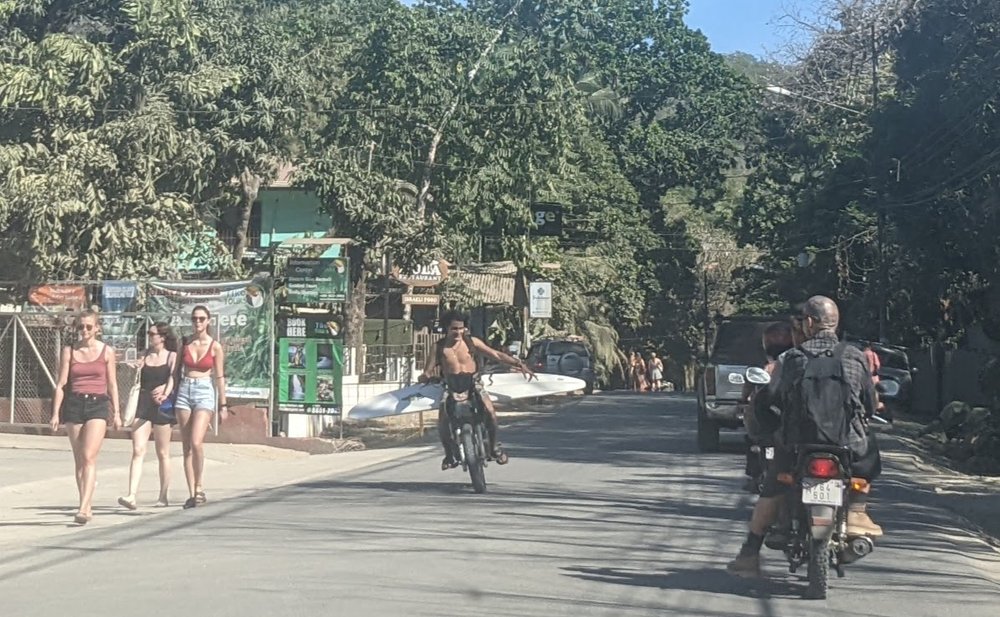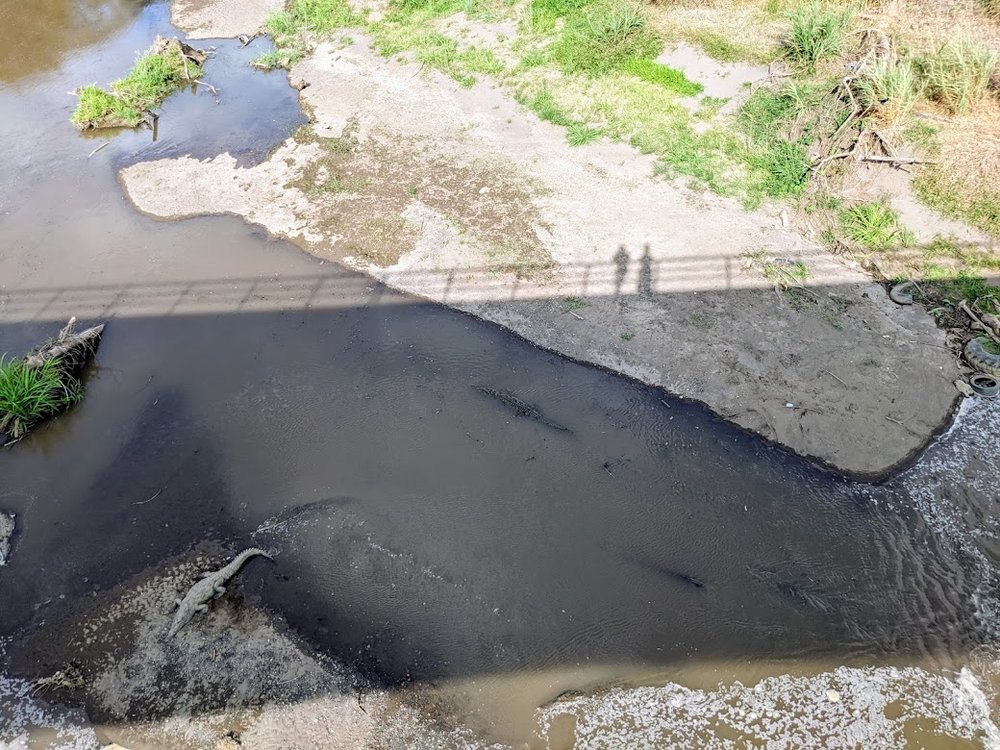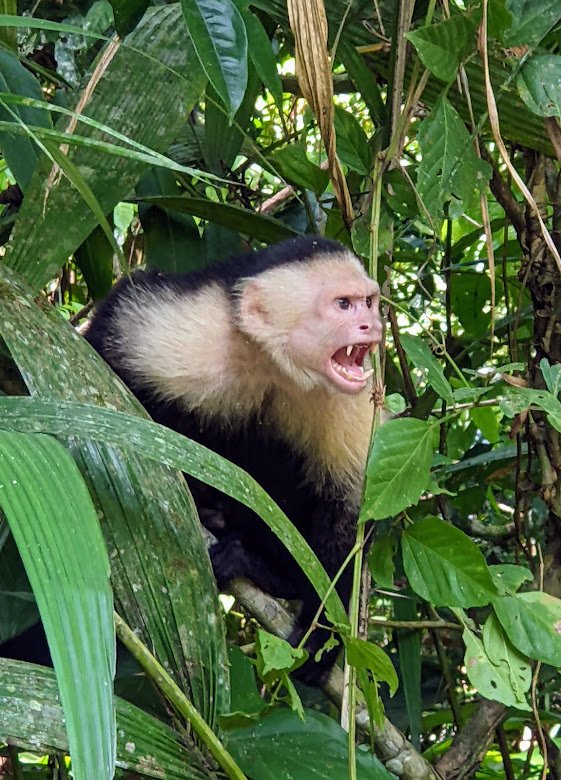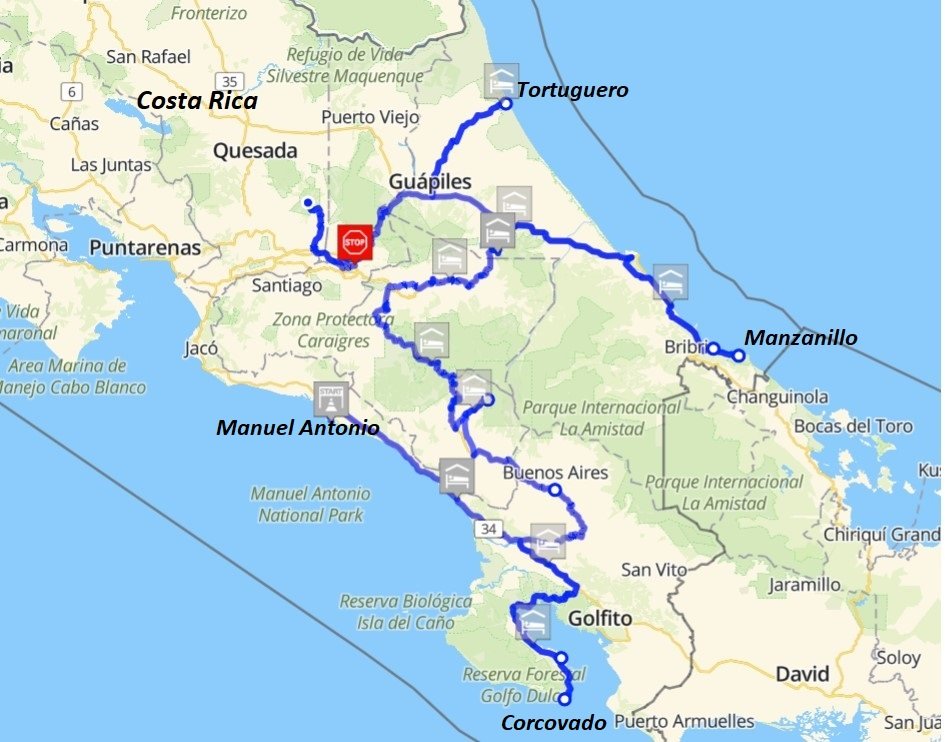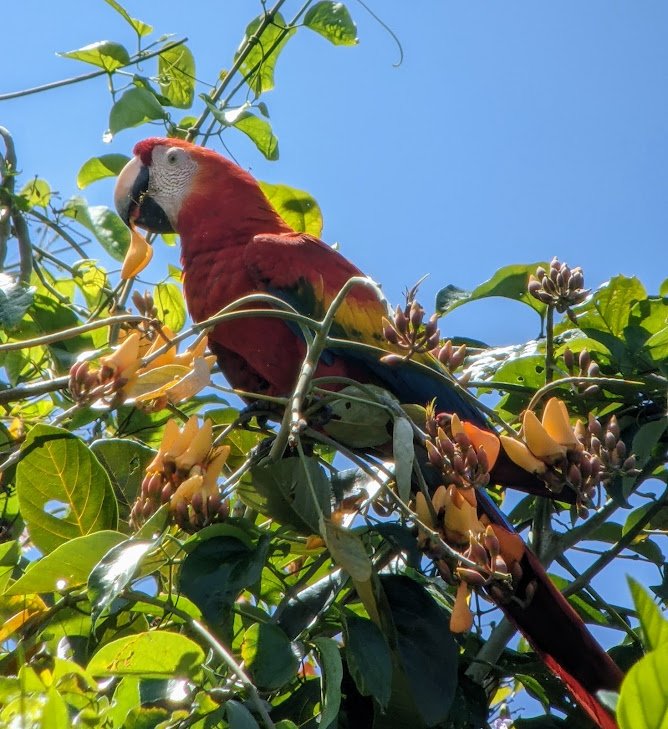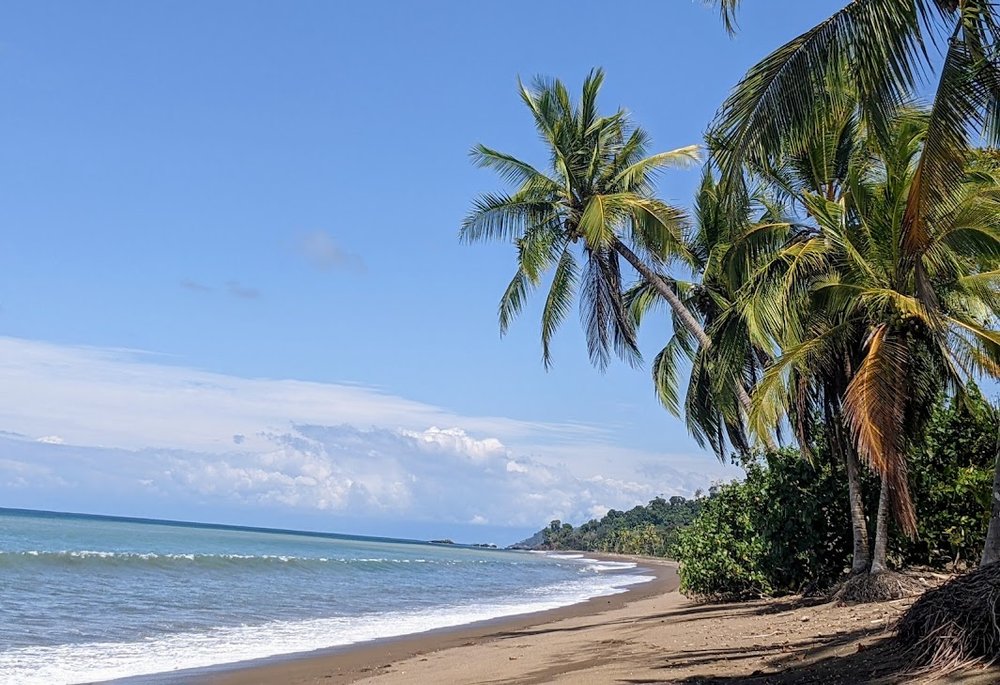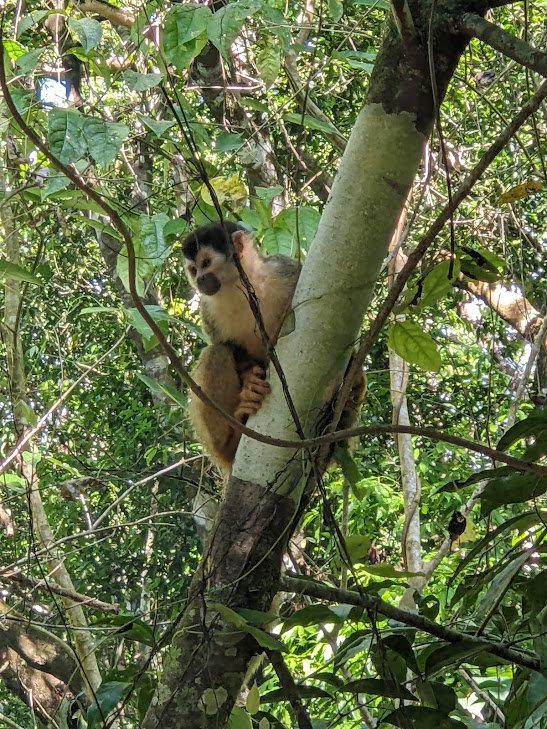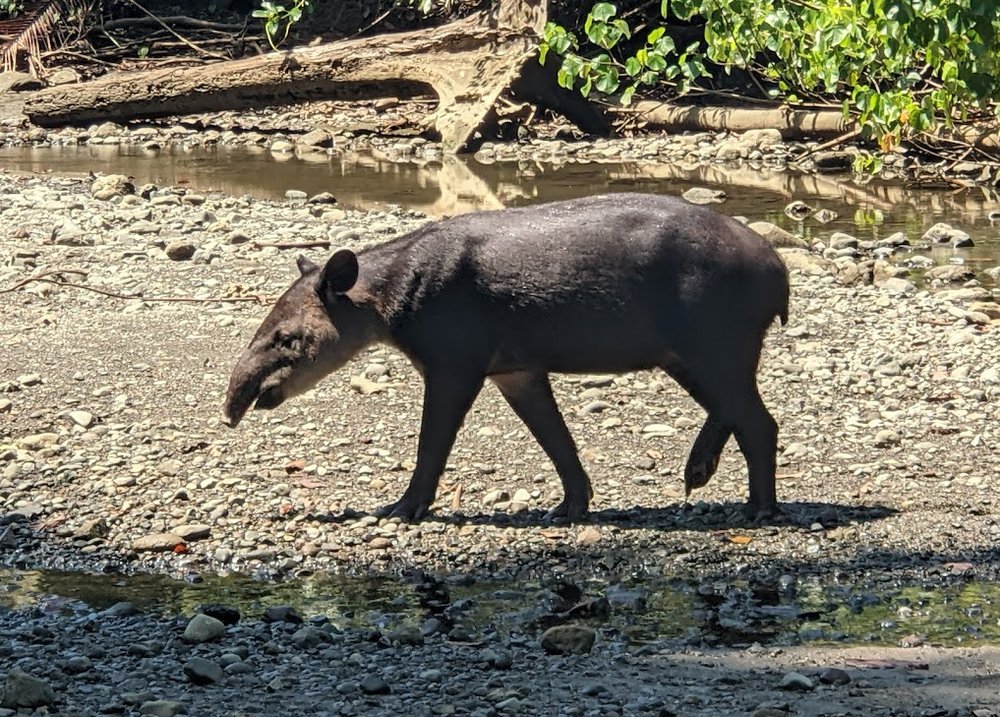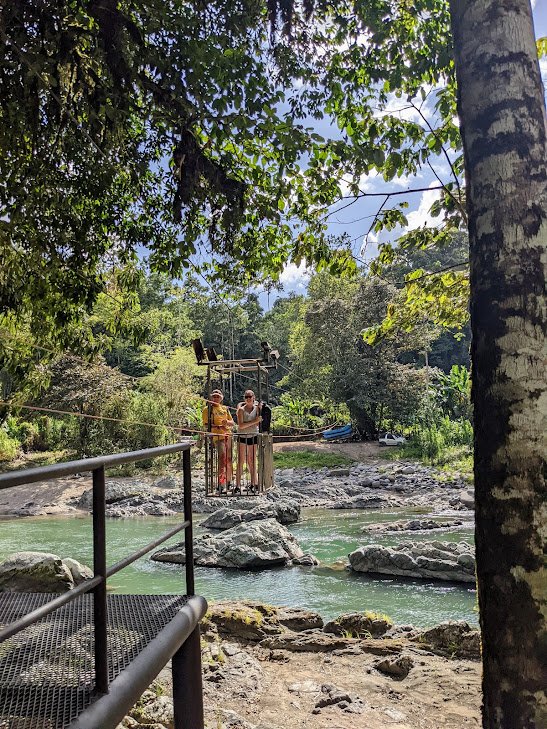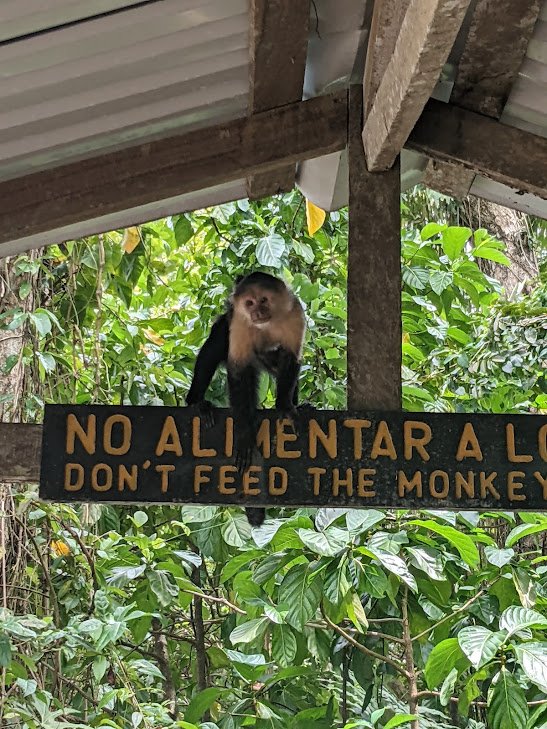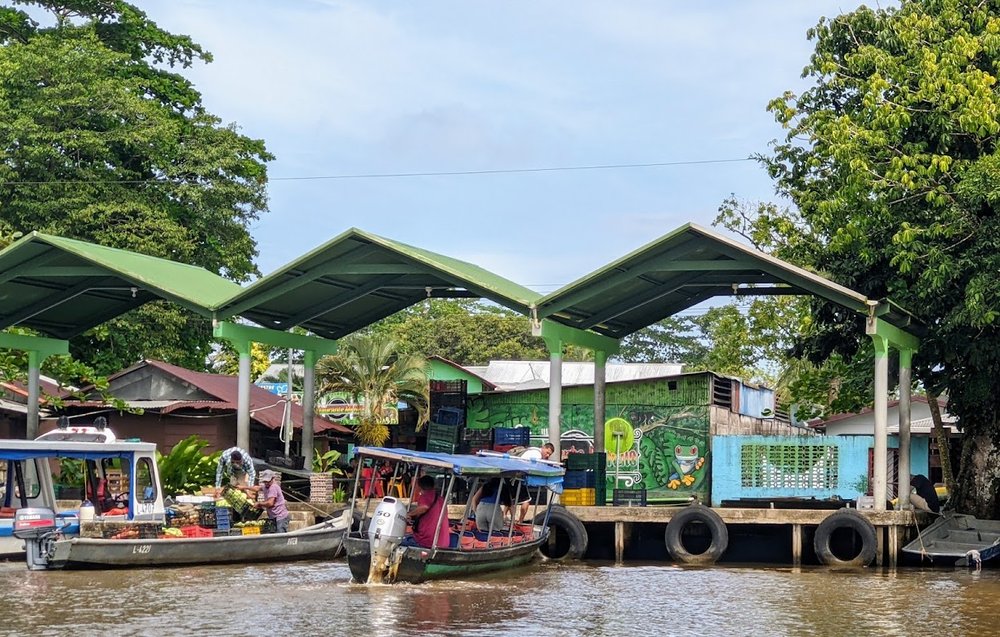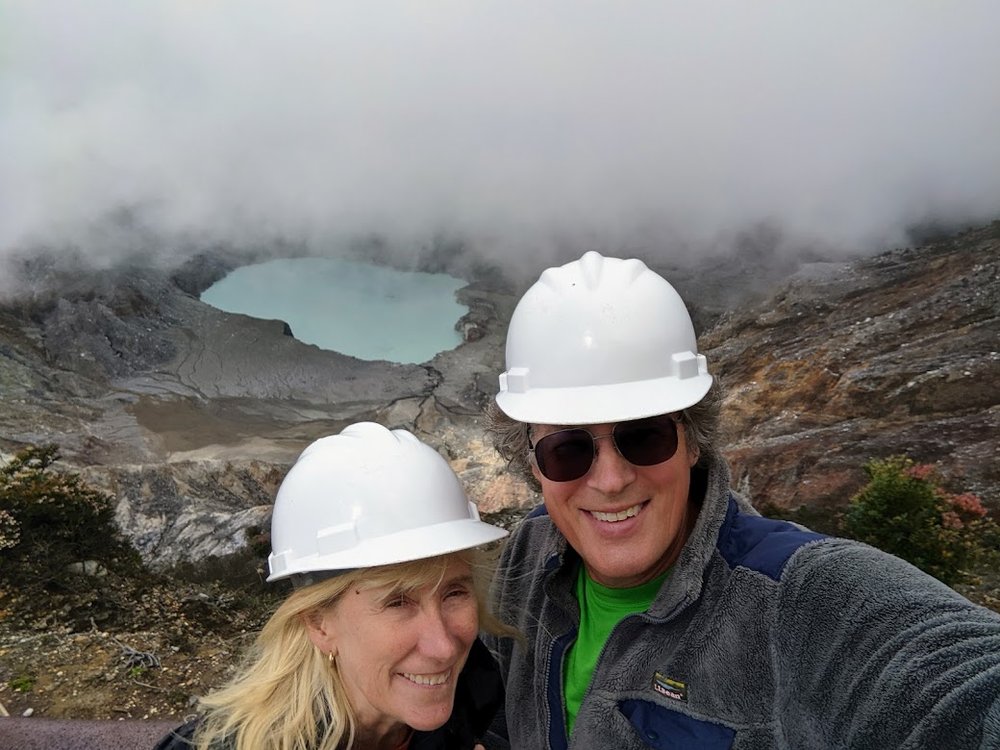tacototheworld
Well-known member
LATVIA
We said goodbye to Estonia, with hopes of returning (never enough time), and made our way to Latvia. First stop, the village of Cēsis and a castle, of course.
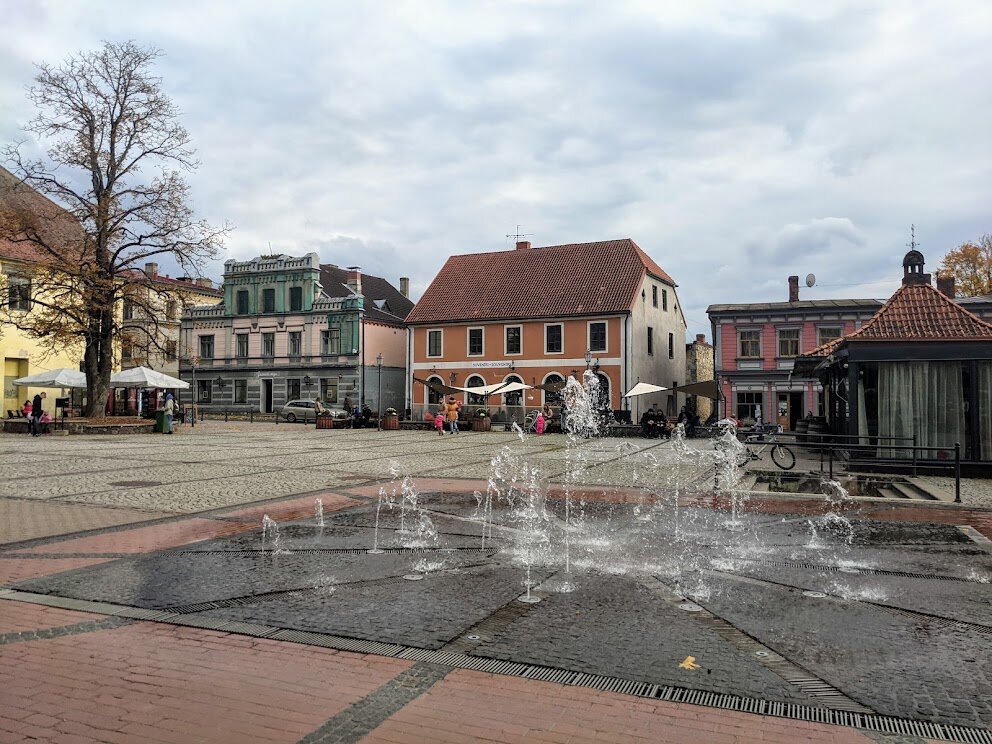
Cēsis town square, Latvia
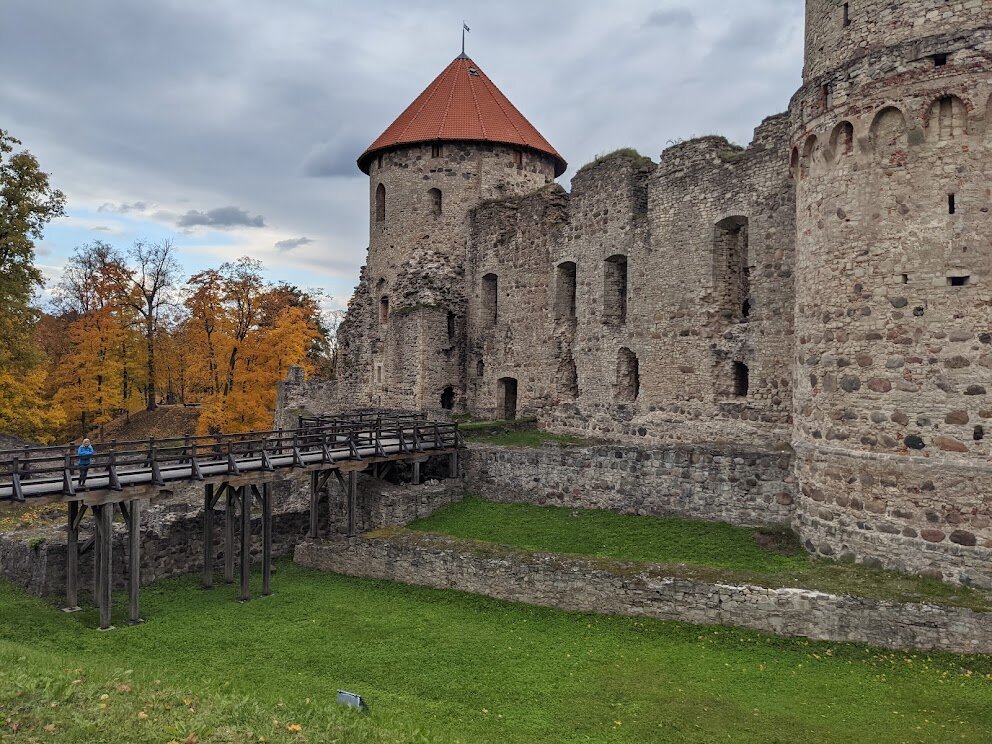
Cēsis Castle
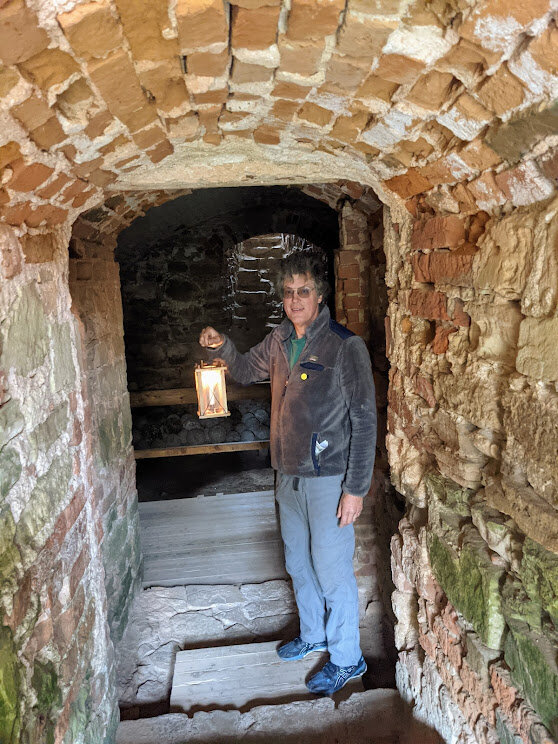
Keeping it atmospheric, we were given a candle lantern to explore the inside of the castle
Cēsis Castle was fantastic - for us, it struck the right balance of ruins and reconstruction. You could feel its age, get a sense of its true bones and yet there was enough reconstruction to explore what the castle really felt like.
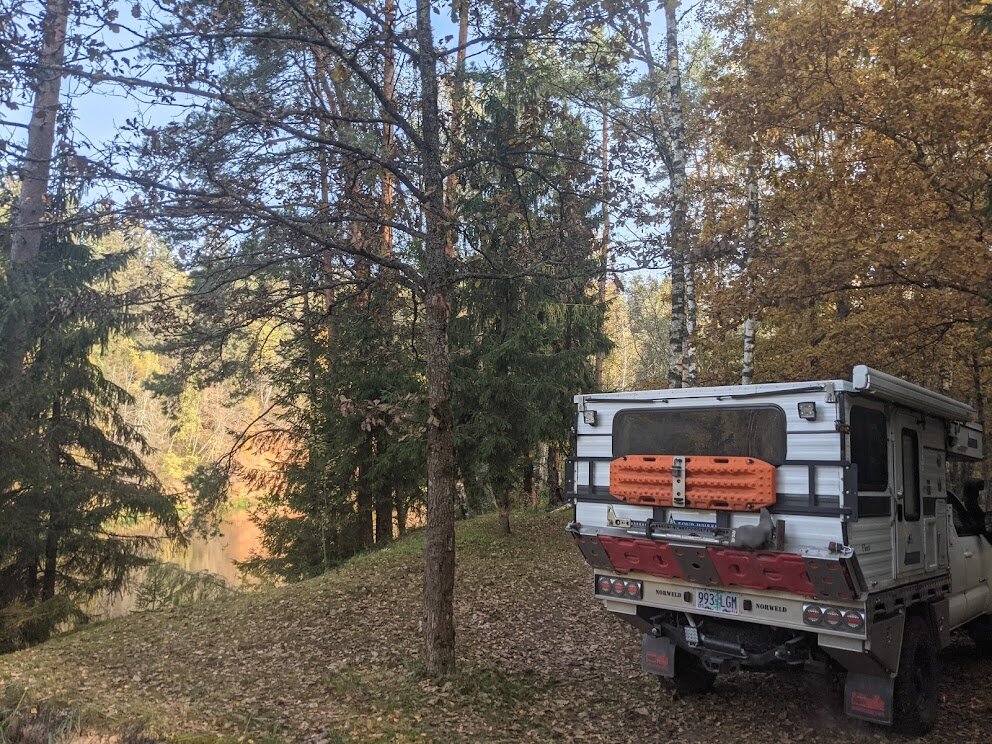
First Latvian camping spot - Gauja National Park on the Gauja River
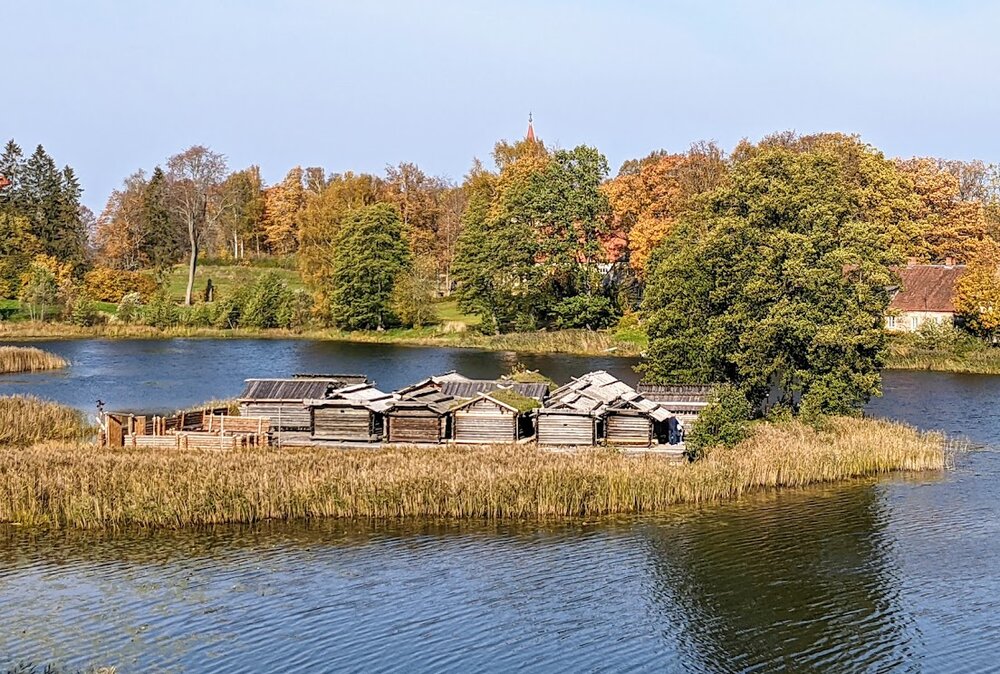
Rumšiškės - Āraiši archeological park with reconstructed island fortress
Next, more history lessons. Everyday we learn more about how little we have known about the world we live in. We visited the Āraiši archeological park in Rumšiškės to see a recontructed island fortress and recontructed bronze age homes.

Then onwards to Sigulda for, once again, castles. We opted to park at the train station and walk what we thought was a 7 km loop encompassing three castles and a cave. As it turned out, the mileage was one way so we ended up walking 13 km on roads, up and down steps and through construction zones. In the end we were very tired and likely did not appreciate the sites as much as we could have. Some days are like that.

Gūtmaņa Cave, largest erosion cave in the Baltics. It was a nice Sunday so we were not alone. Interesting inscriptions everywhere.
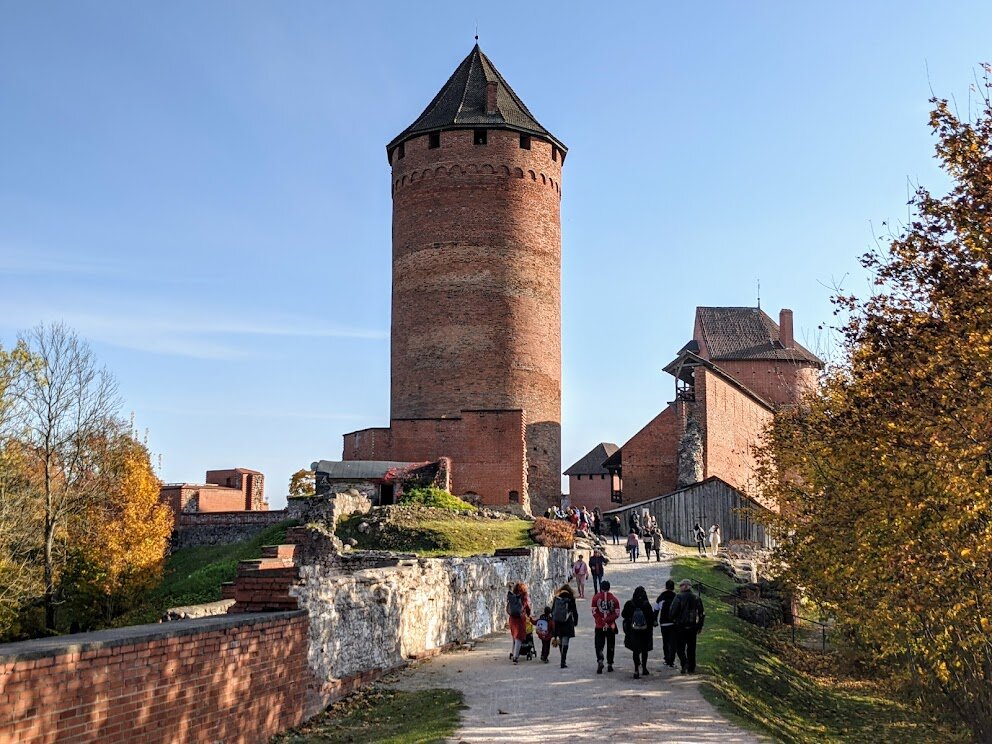
Rebuilt medieval castle in Sigulda. Not our favorite castle, but we were tired and over stimulated with people and sites
After getting refreshed and replenished in the woods we were ready to hit another big city - Riga. We put truck life on hold and booked into a room in an old convent in the old town. $40 US per night and we had an apartment with a mini-fridge so that we could transfer groceries and complete a needed defrost of the camper fridge.
A quick COVID note, in Estonia there were no restriction or requests to see our proof of vaccination. In Latvia, we were asked to show proof of vaccination to enter a building - store or restaurant. We have been able to show pictures of our cardboard US vaccination cards most places. We have also downloaded the CLEAR app and have a QR code. However, the QR code does not work in Europe. So far the only thing we have been prevented from doing was going to see the new James Bond movie on Andy’s birthday. They were only accepting Latvian QR codes. Oh well, safety first.
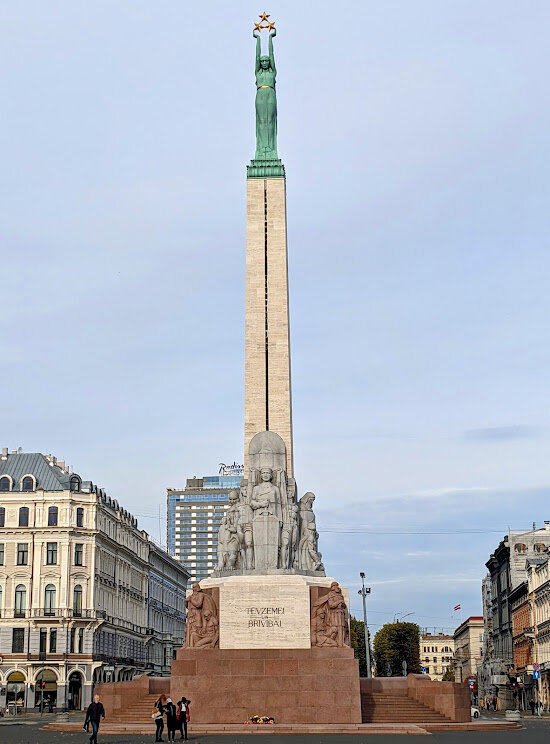
Freedom Monument in Riga, symbolizing Latvia’s hard won independence
Once again we joined the free walking tours, spending many hours with Kaspars, a native Latvian who taught us with humor and grace.
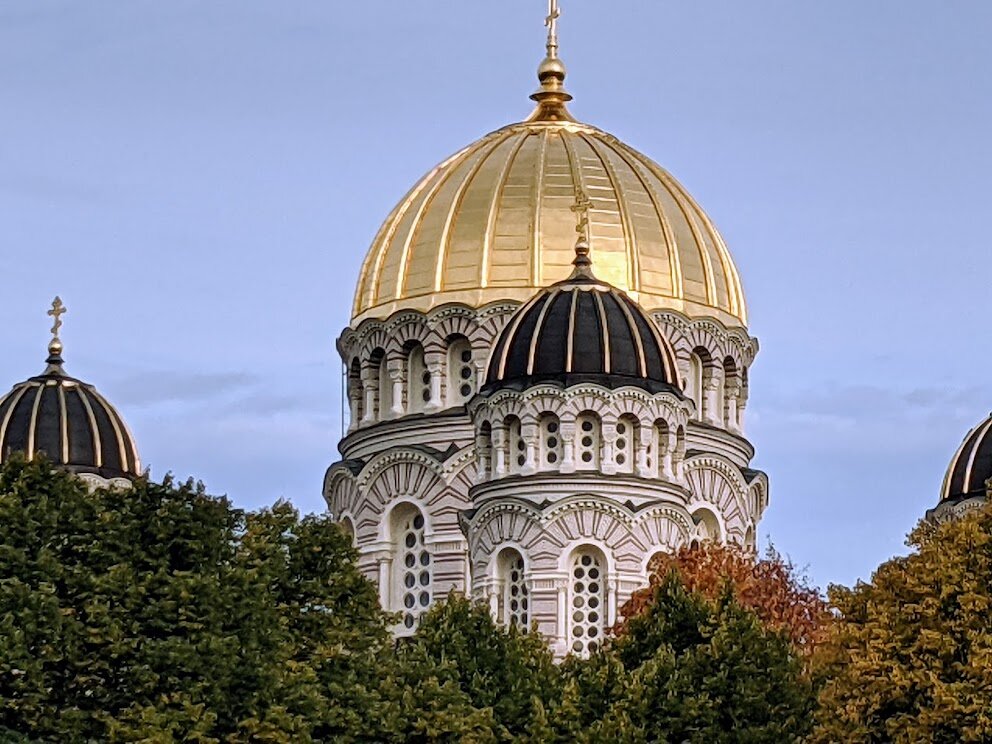
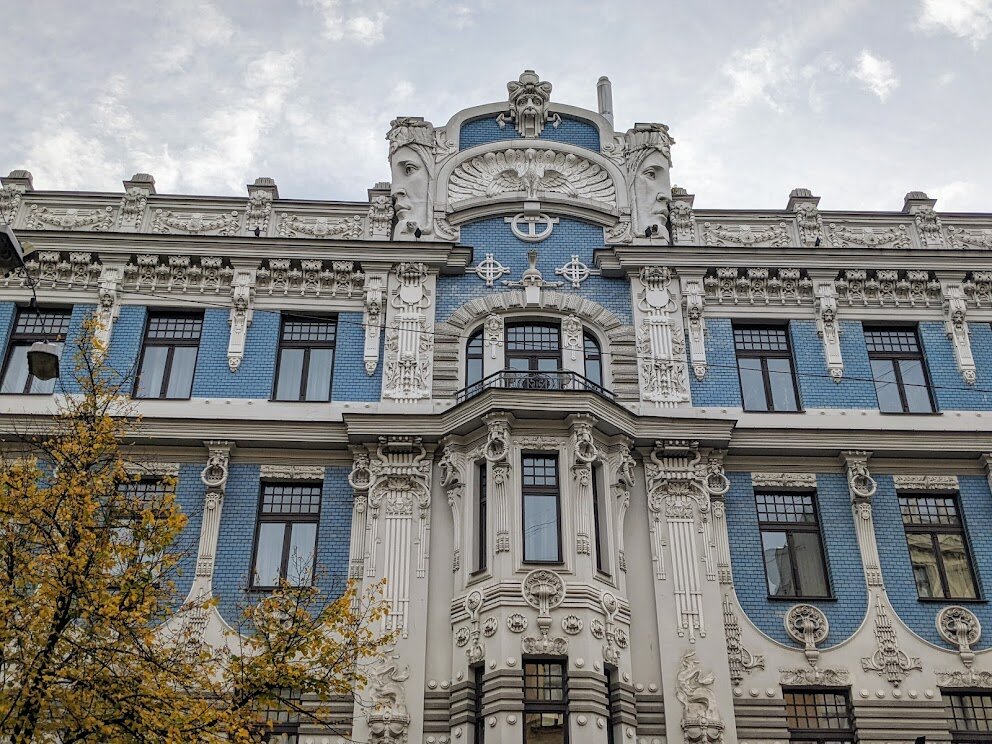
Riga’s Art Nouveau, highest concentration of Art Nouveau architecture of anywhere in the world
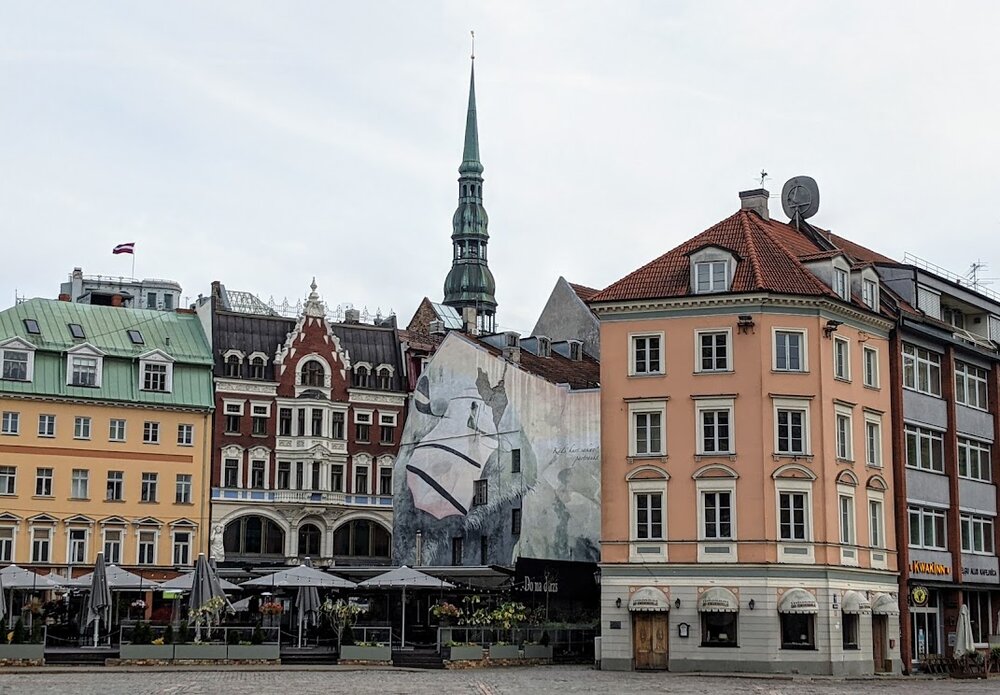
Old town Riga
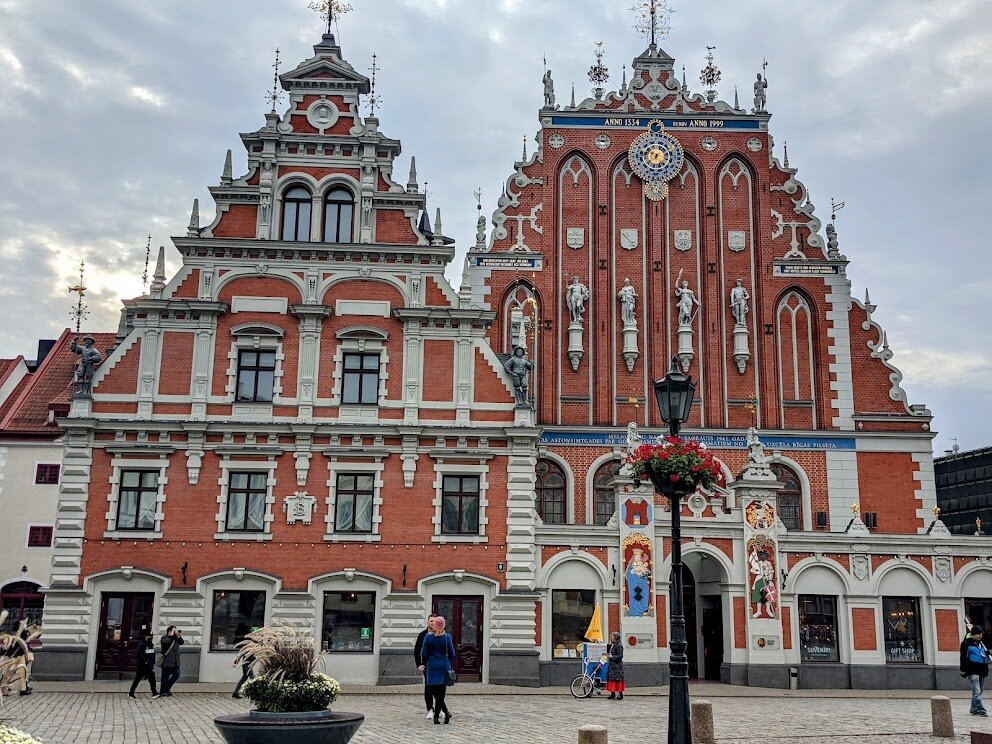
House of Blackheads, Riga
Kaspars took us by the iconic House of the Blackheads in Riga but also pointed out that despite the language on the buildings stating they were renovated in the 1990’s, they were actually completely rebuilt. So not old, but a replica of what was.
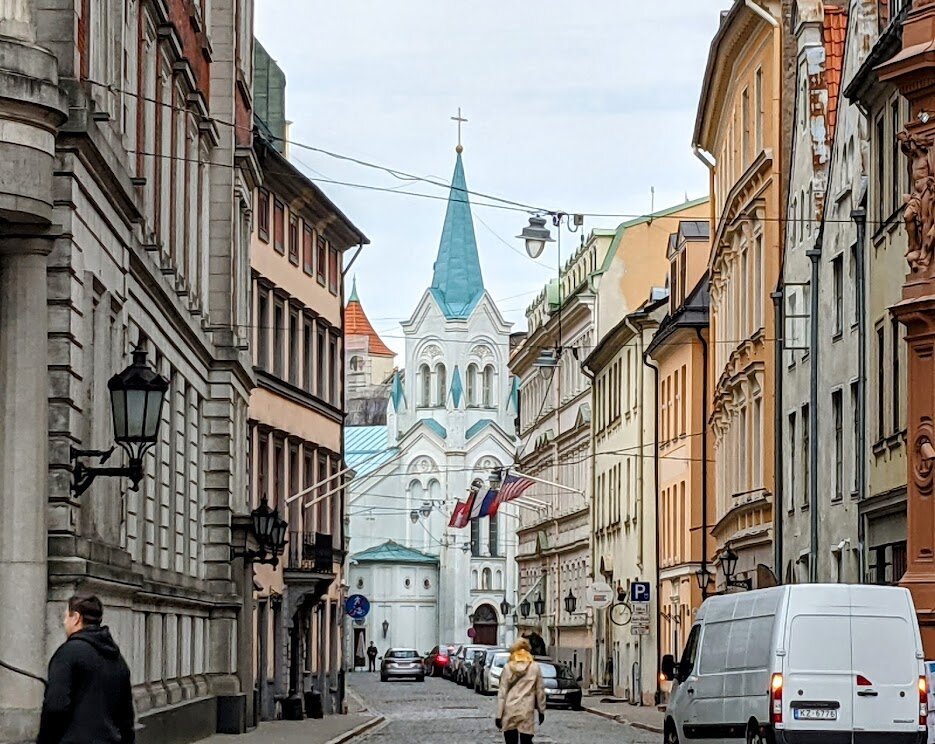
More stunning architecture
Replenished with food, water, propane, gas and freshly showered, we left Riga for our final two spots in Latvia.
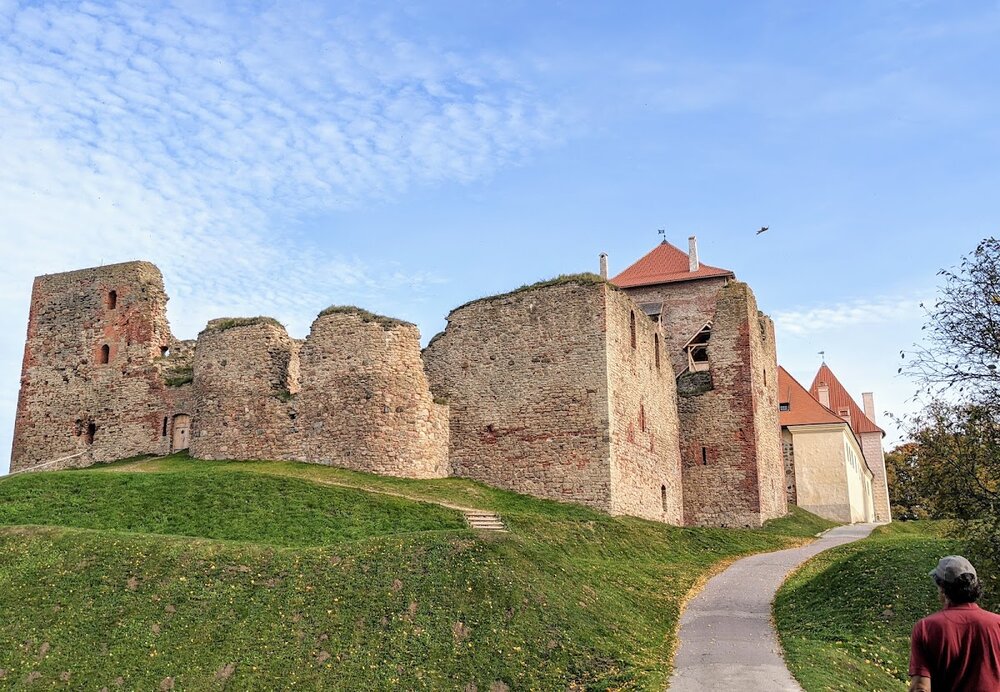
Bauska Castle, partially recontructed and partly in ruins
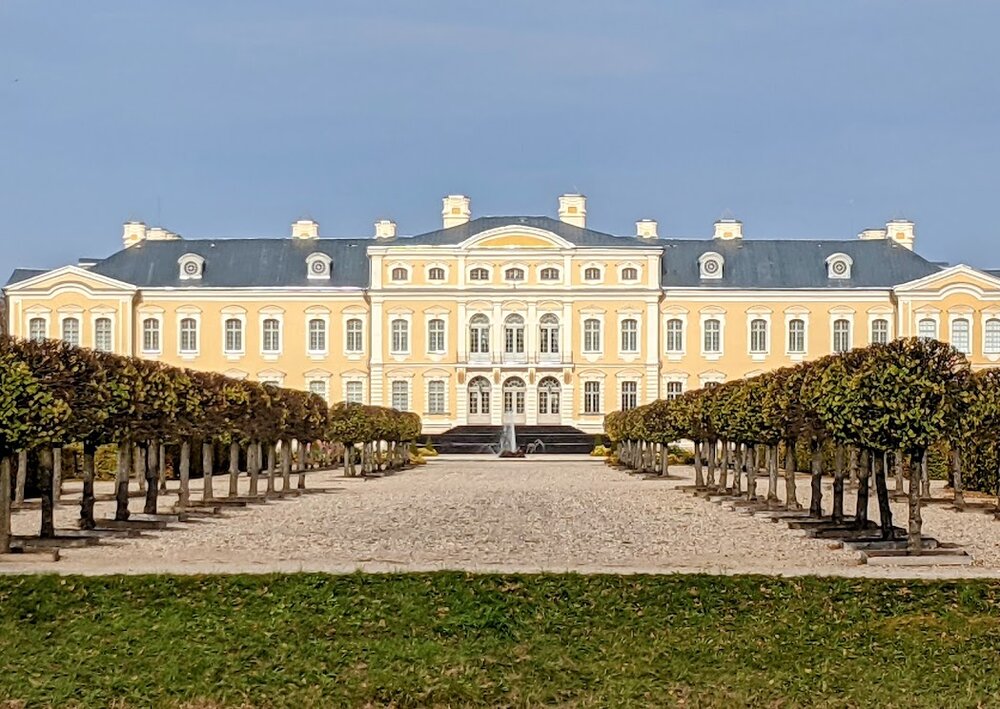
Rundāle Palace, built by German dukes in the 1700’s. We walked around the outside gardens to stretch our legs but opted out of the paid entrance fee.
We said goodbye to Estonia, with hopes of returning (never enough time), and made our way to Latvia. First stop, the village of Cēsis and a castle, of course.

Cēsis town square, Latvia

Cēsis Castle

Keeping it atmospheric, we were given a candle lantern to explore the inside of the castle
Cēsis Castle was fantastic - for us, it struck the right balance of ruins and reconstruction. You could feel its age, get a sense of its true bones and yet there was enough reconstruction to explore what the castle really felt like.

First Latvian camping spot - Gauja National Park on the Gauja River

Rumšiškės - Āraiši archeological park with reconstructed island fortress
Next, more history lessons. Everyday we learn more about how little we have known about the world we live in. We visited the Āraiši archeological park in Rumšiškės to see a recontructed island fortress and recontructed bronze age homes.

Then onwards to Sigulda for, once again, castles. We opted to park at the train station and walk what we thought was a 7 km loop encompassing three castles and a cave. As it turned out, the mileage was one way so we ended up walking 13 km on roads, up and down steps and through construction zones. In the end we were very tired and likely did not appreciate the sites as much as we could have. Some days are like that.

Gūtmaņa Cave, largest erosion cave in the Baltics. It was a nice Sunday so we were not alone. Interesting inscriptions everywhere.

Rebuilt medieval castle in Sigulda. Not our favorite castle, but we were tired and over stimulated with people and sites
After getting refreshed and replenished in the woods we were ready to hit another big city - Riga. We put truck life on hold and booked into a room in an old convent in the old town. $40 US per night and we had an apartment with a mini-fridge so that we could transfer groceries and complete a needed defrost of the camper fridge.
A quick COVID note, in Estonia there were no restriction or requests to see our proof of vaccination. In Latvia, we were asked to show proof of vaccination to enter a building - store or restaurant. We have been able to show pictures of our cardboard US vaccination cards most places. We have also downloaded the CLEAR app and have a QR code. However, the QR code does not work in Europe. So far the only thing we have been prevented from doing was going to see the new James Bond movie on Andy’s birthday. They were only accepting Latvian QR codes. Oh well, safety first.

Freedom Monument in Riga, symbolizing Latvia’s hard won independence
Once again we joined the free walking tours, spending many hours with Kaspars, a native Latvian who taught us with humor and grace.


Riga’s Art Nouveau, highest concentration of Art Nouveau architecture of anywhere in the world

Old town Riga

House of Blackheads, Riga
Kaspars took us by the iconic House of the Blackheads in Riga but also pointed out that despite the language on the buildings stating they were renovated in the 1990’s, they were actually completely rebuilt. So not old, but a replica of what was.

More stunning architecture
Replenished with food, water, propane, gas and freshly showered, we left Riga for our final two spots in Latvia.

Bauska Castle, partially recontructed and partly in ruins

Rundāle Palace, built by German dukes in the 1700’s. We walked around the outside gardens to stretch our legs but opted out of the paid entrance fee.

